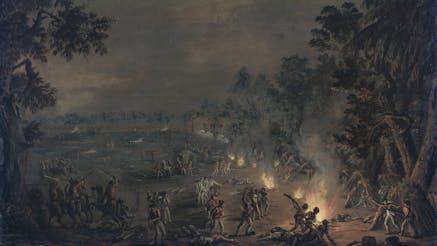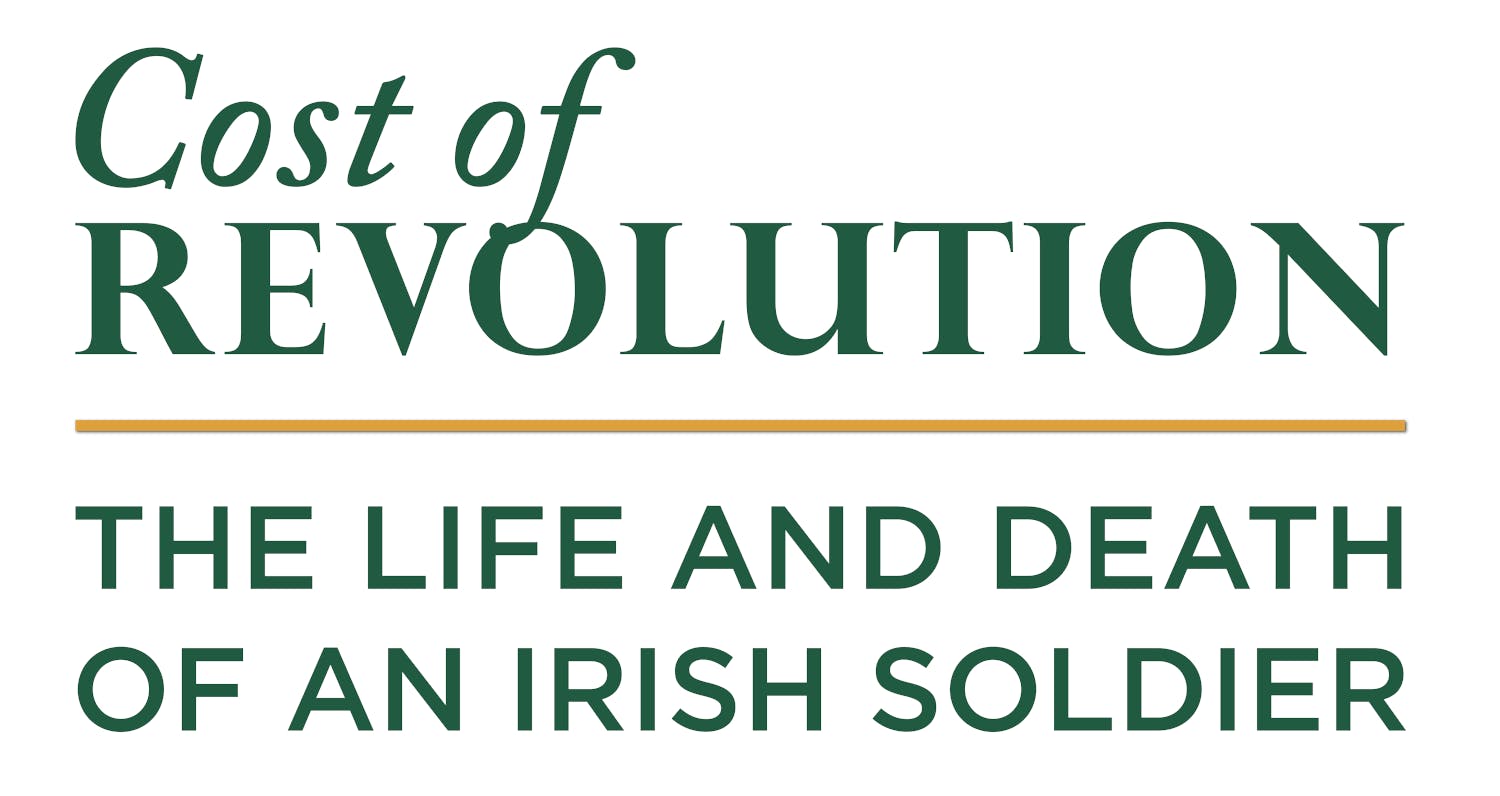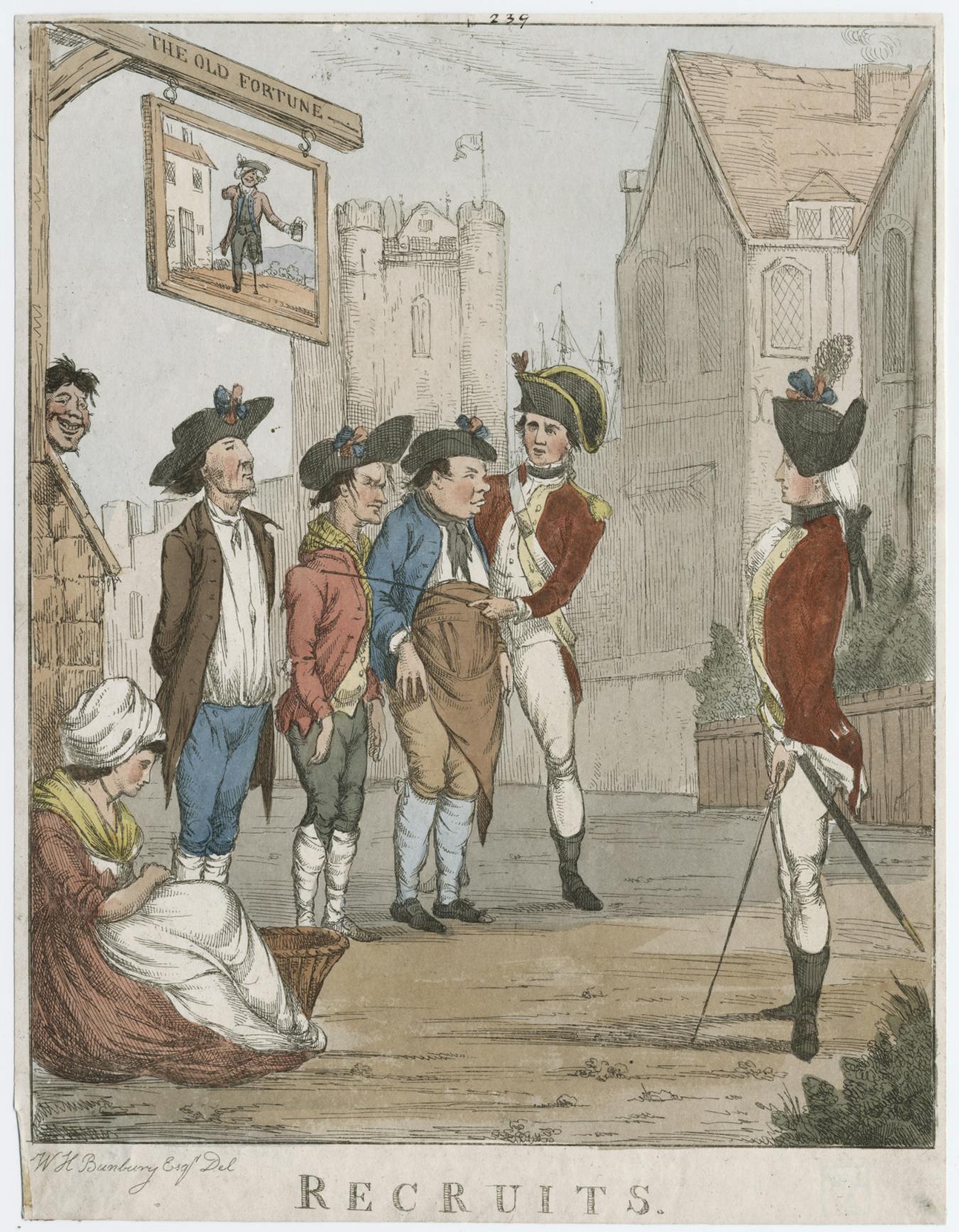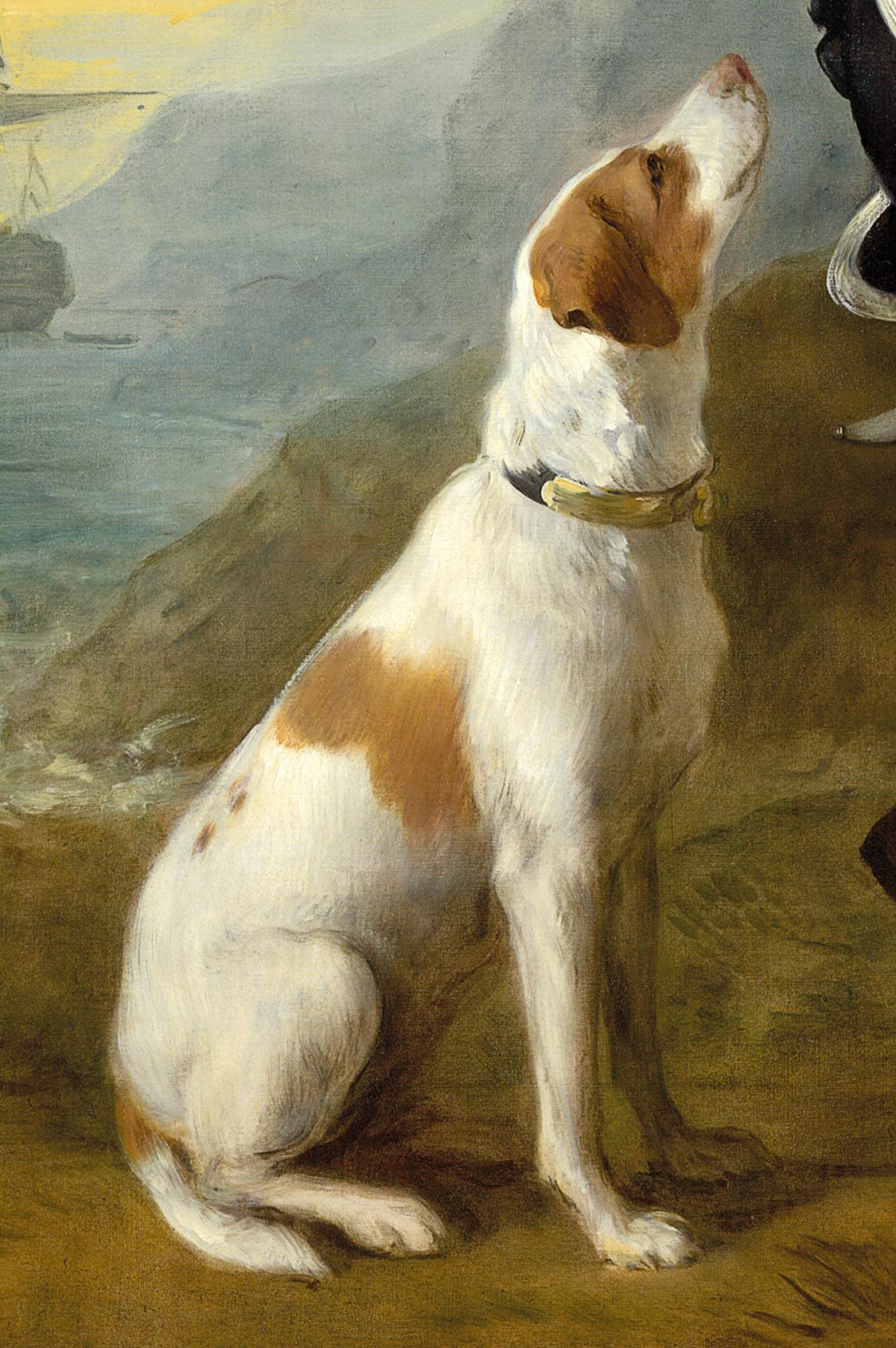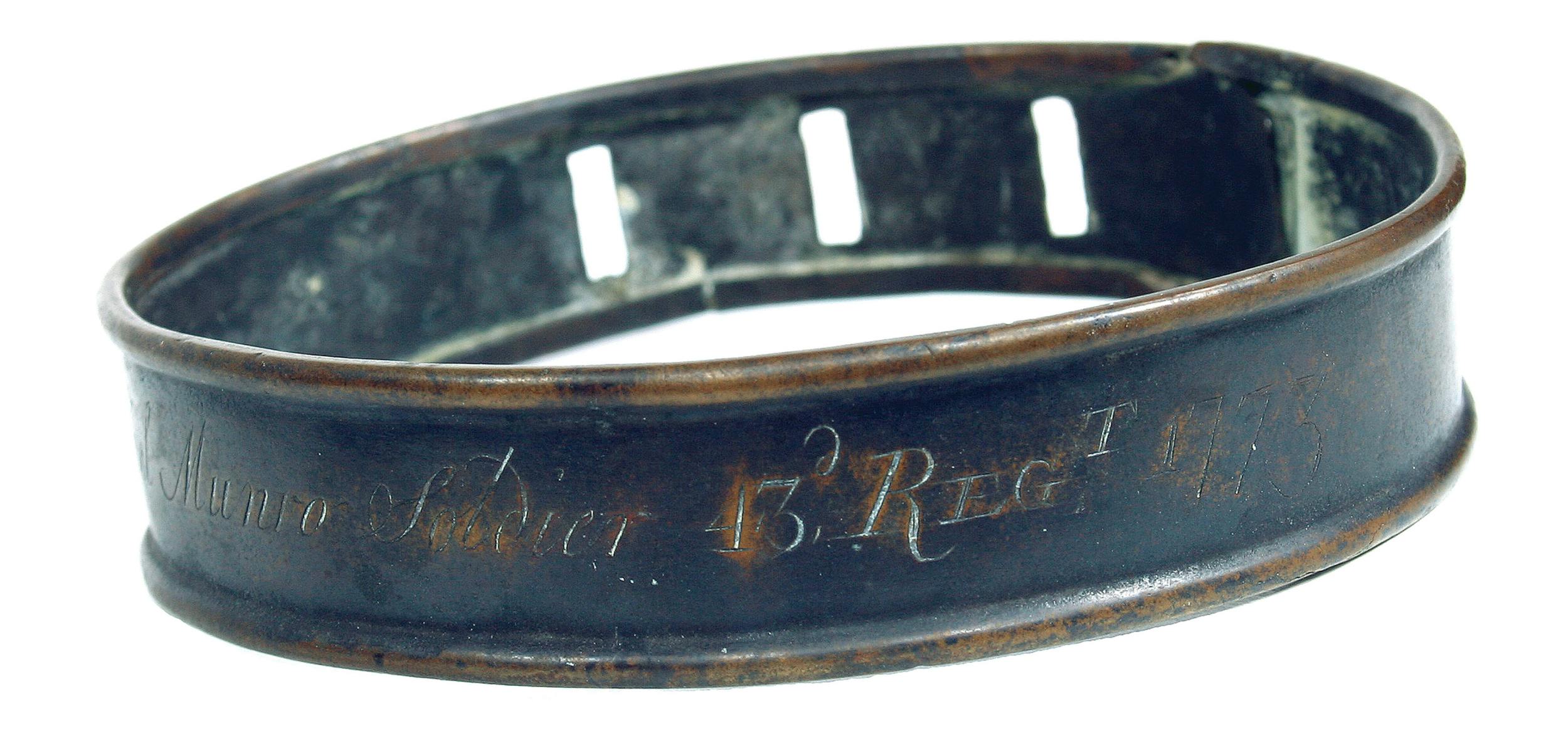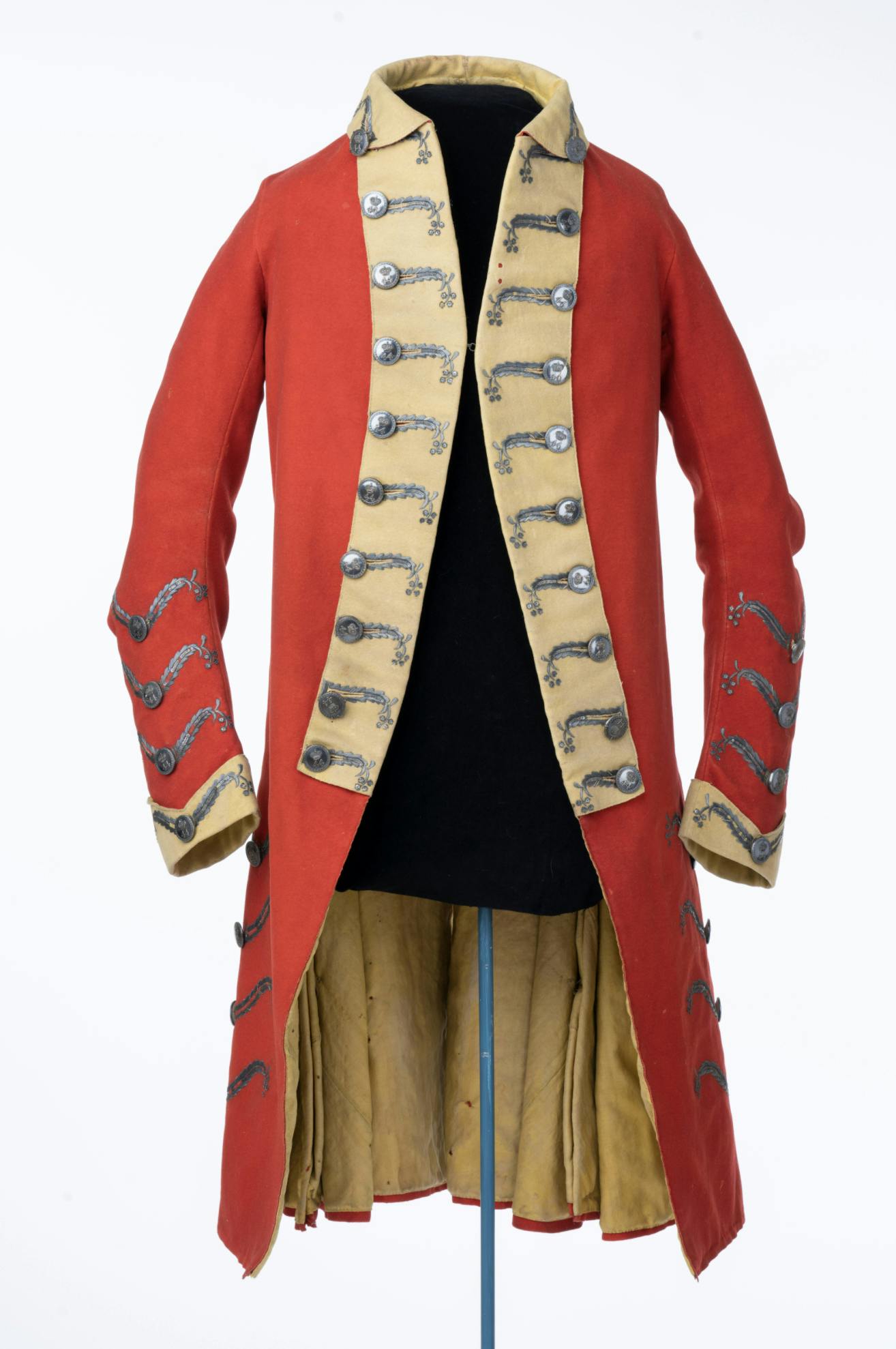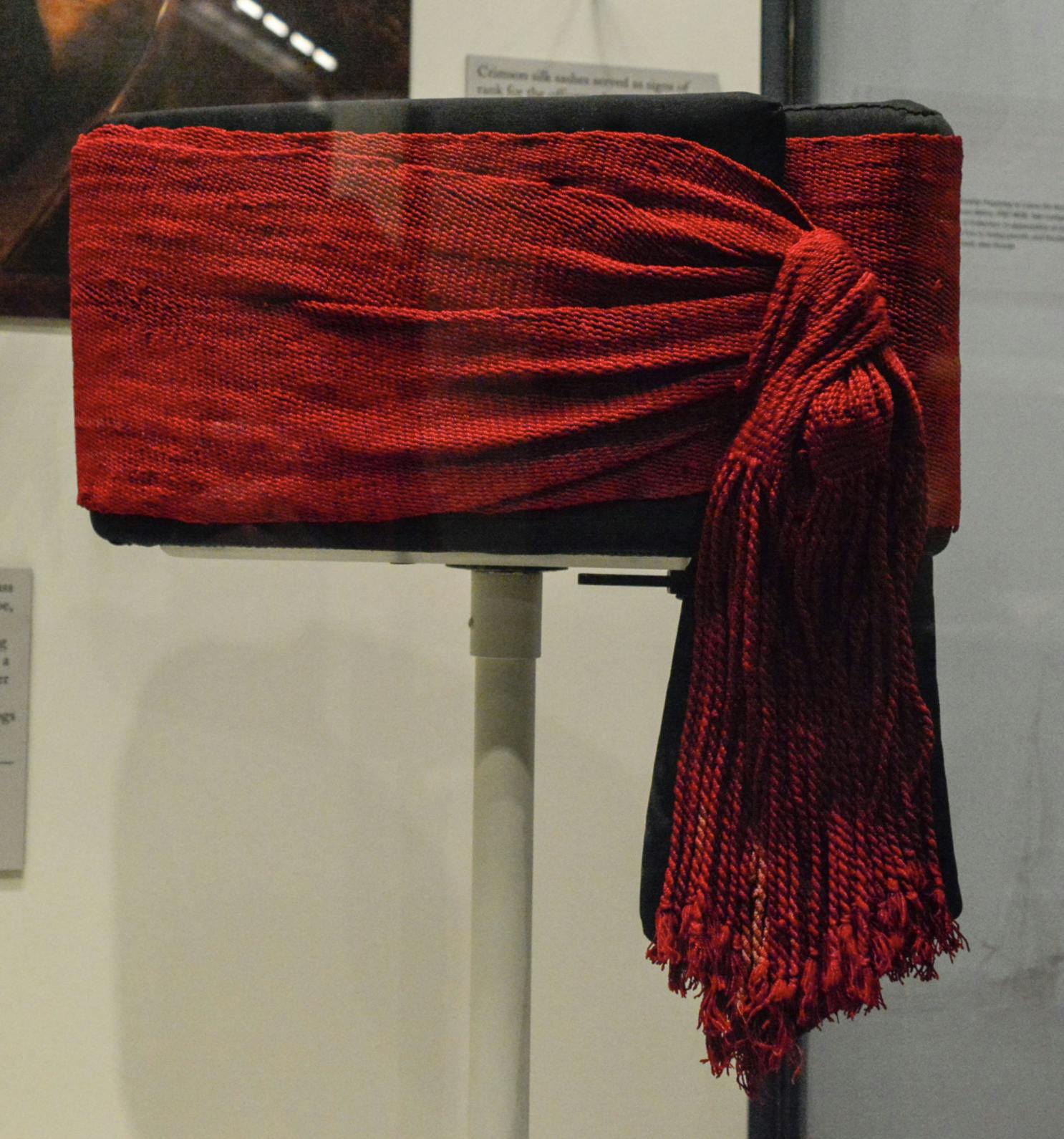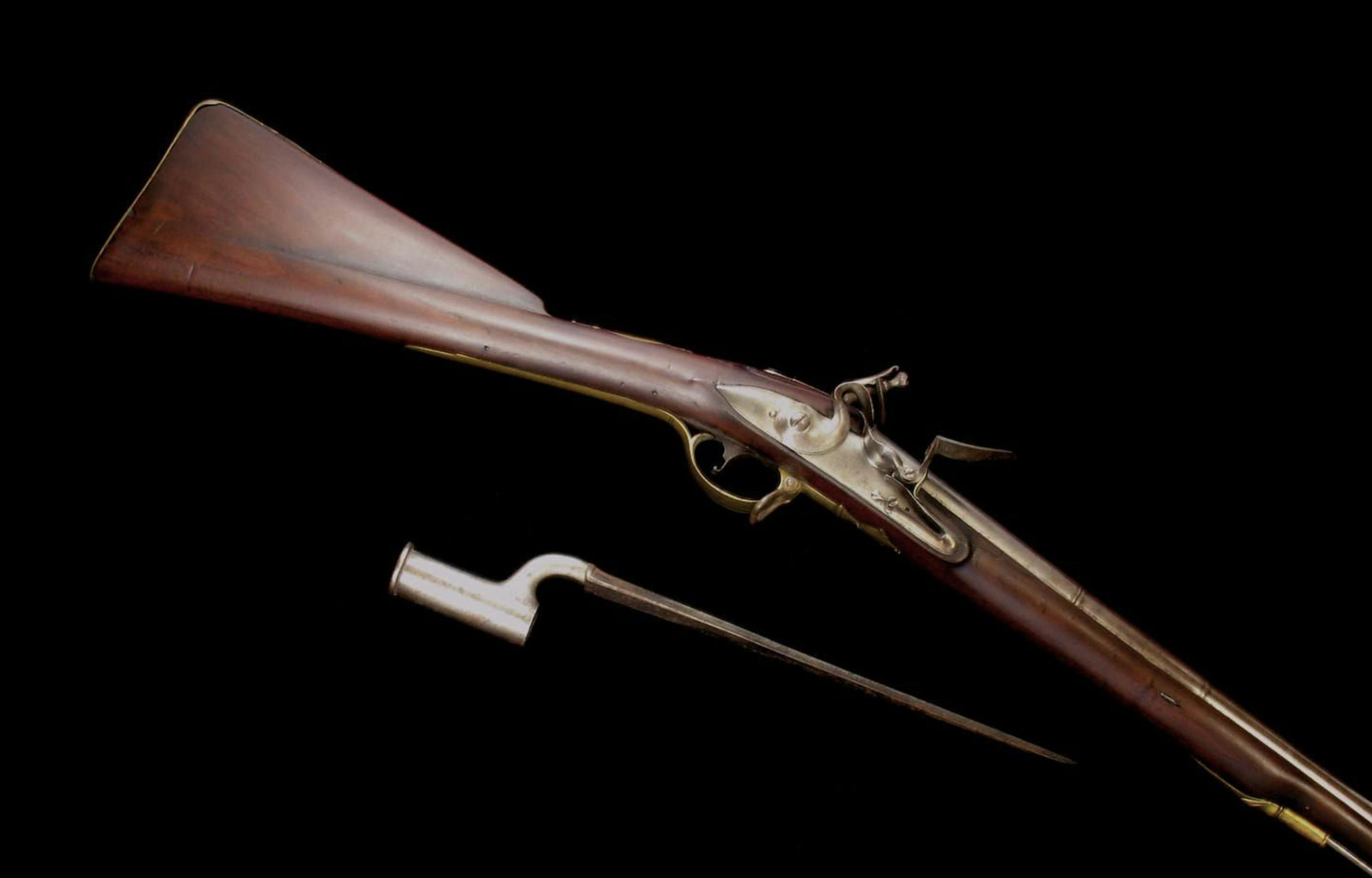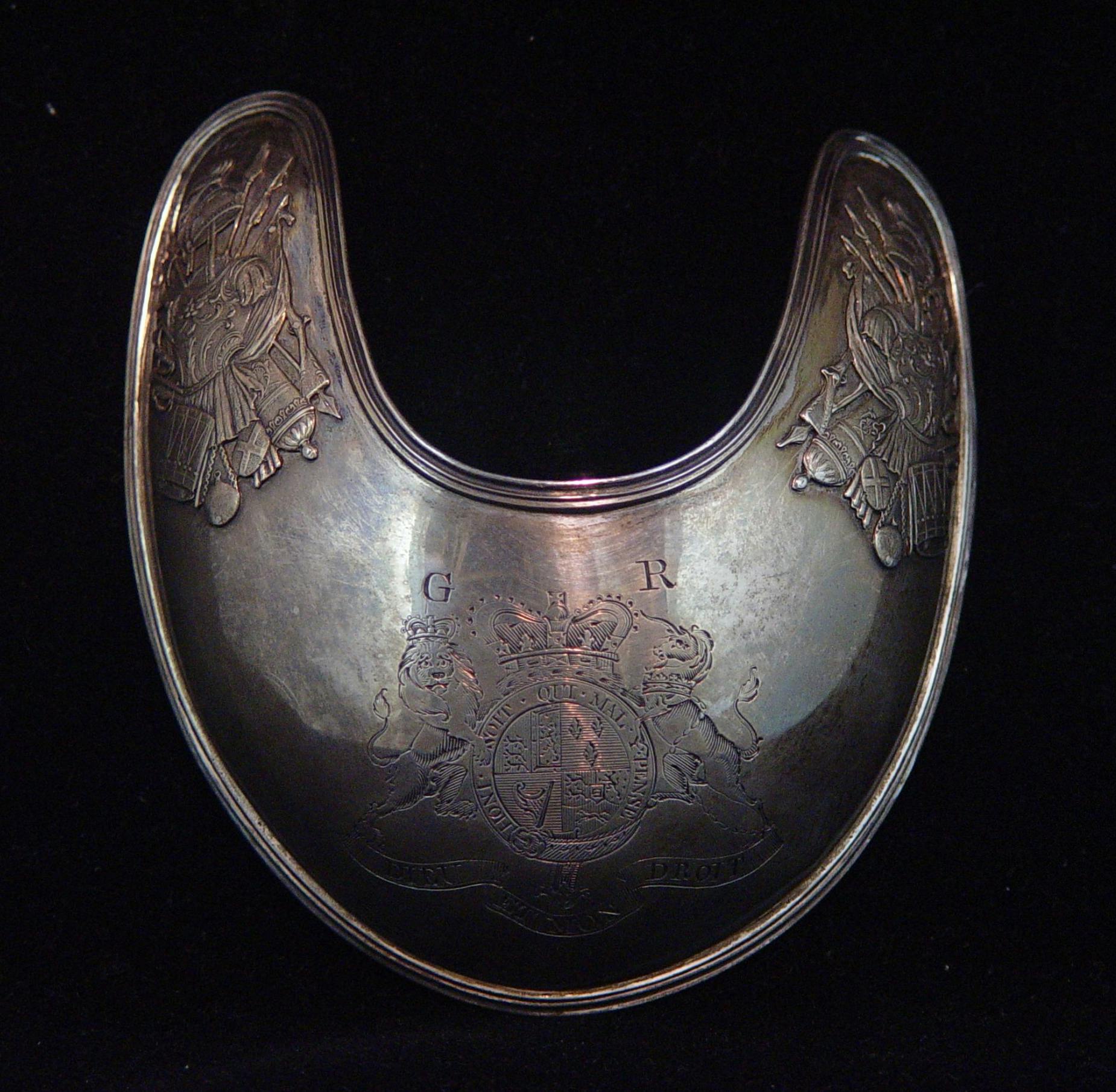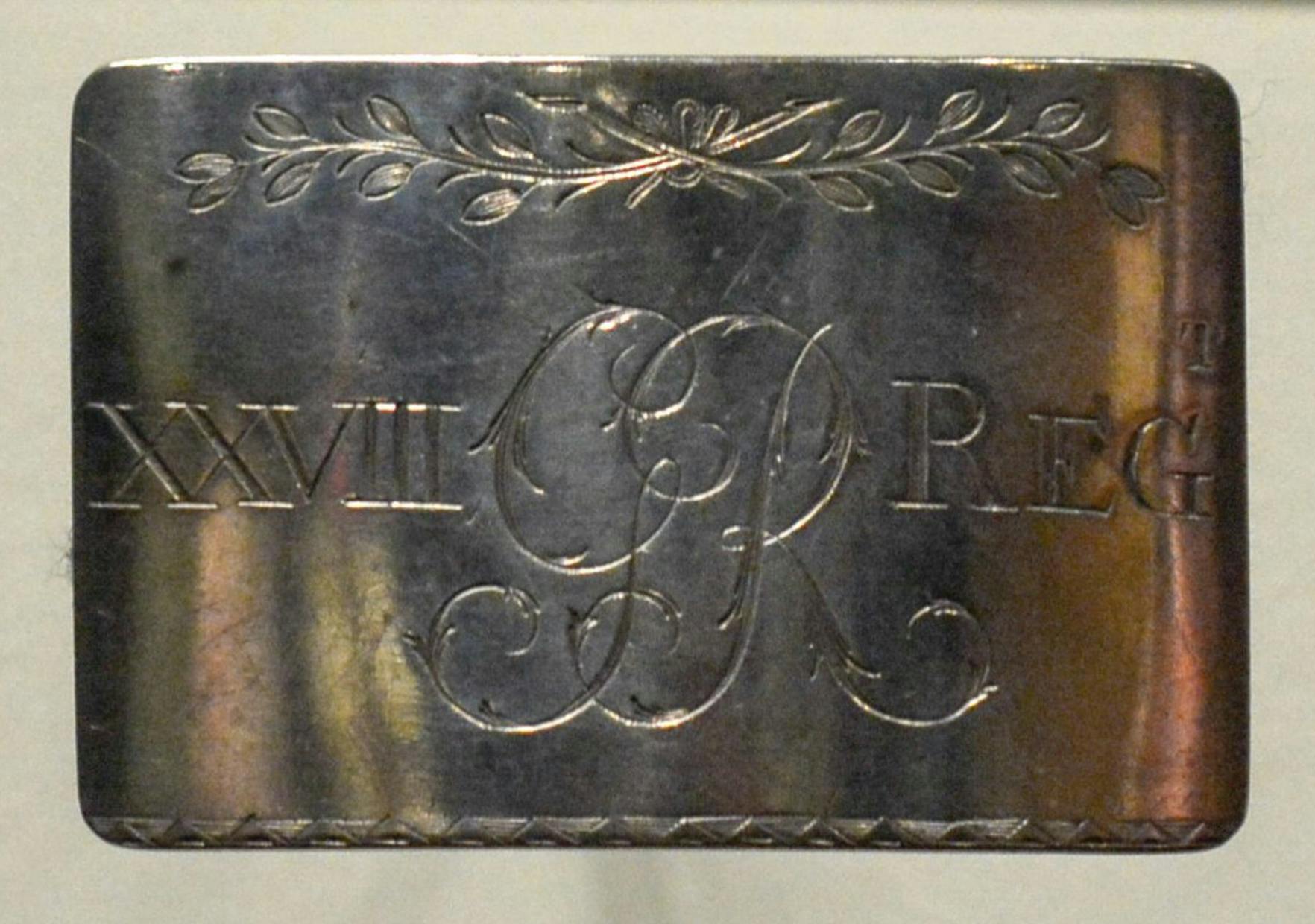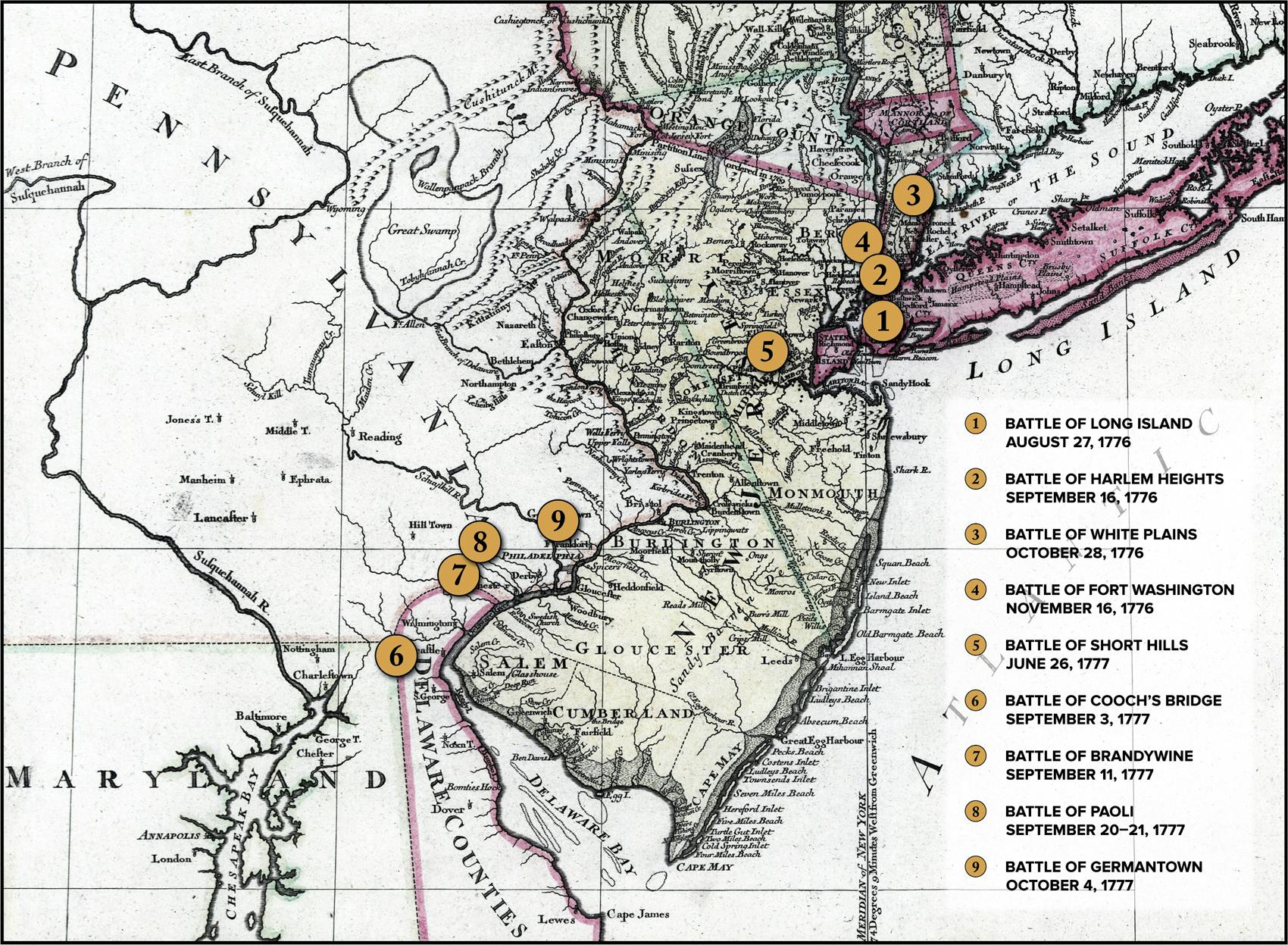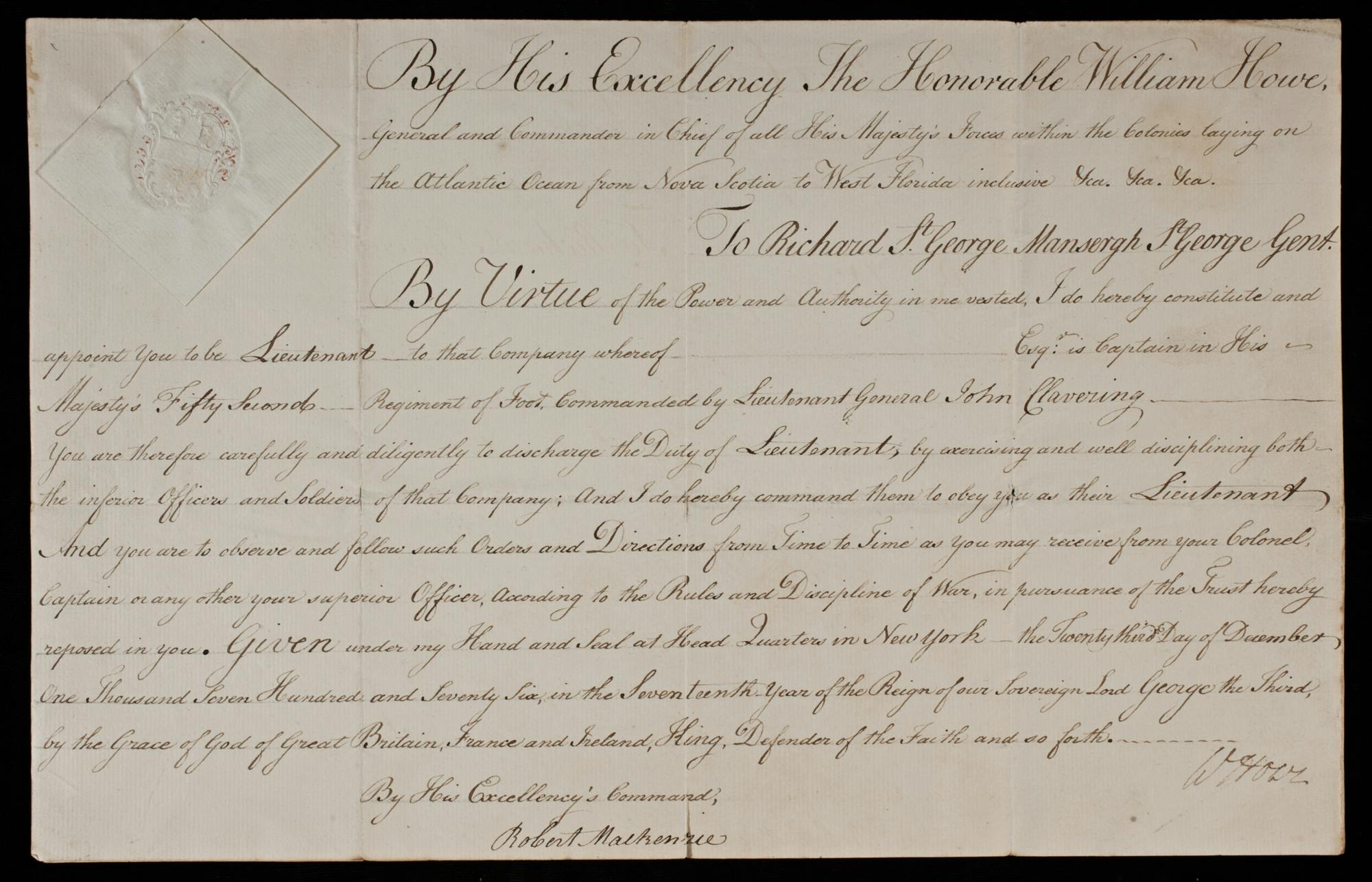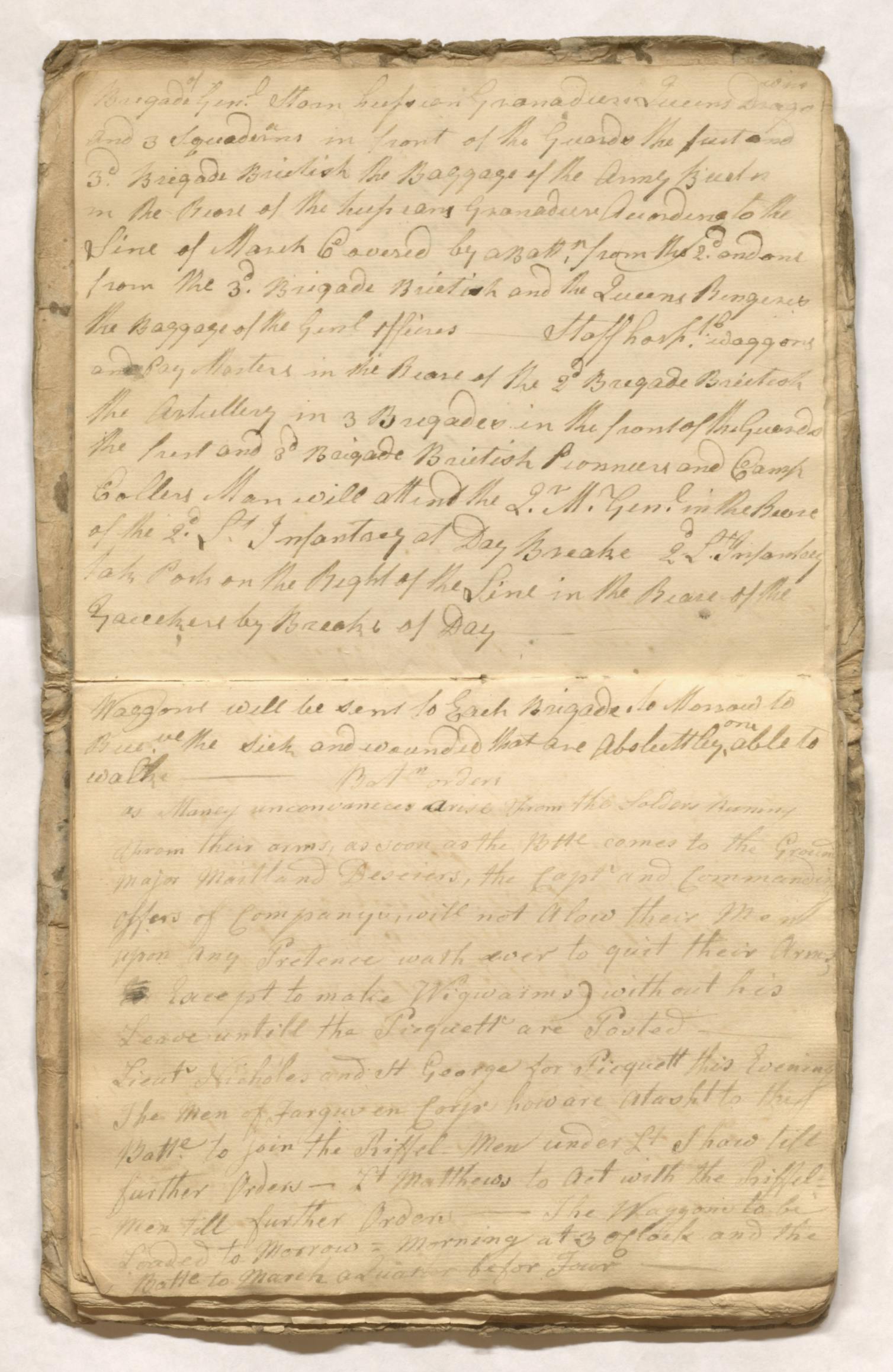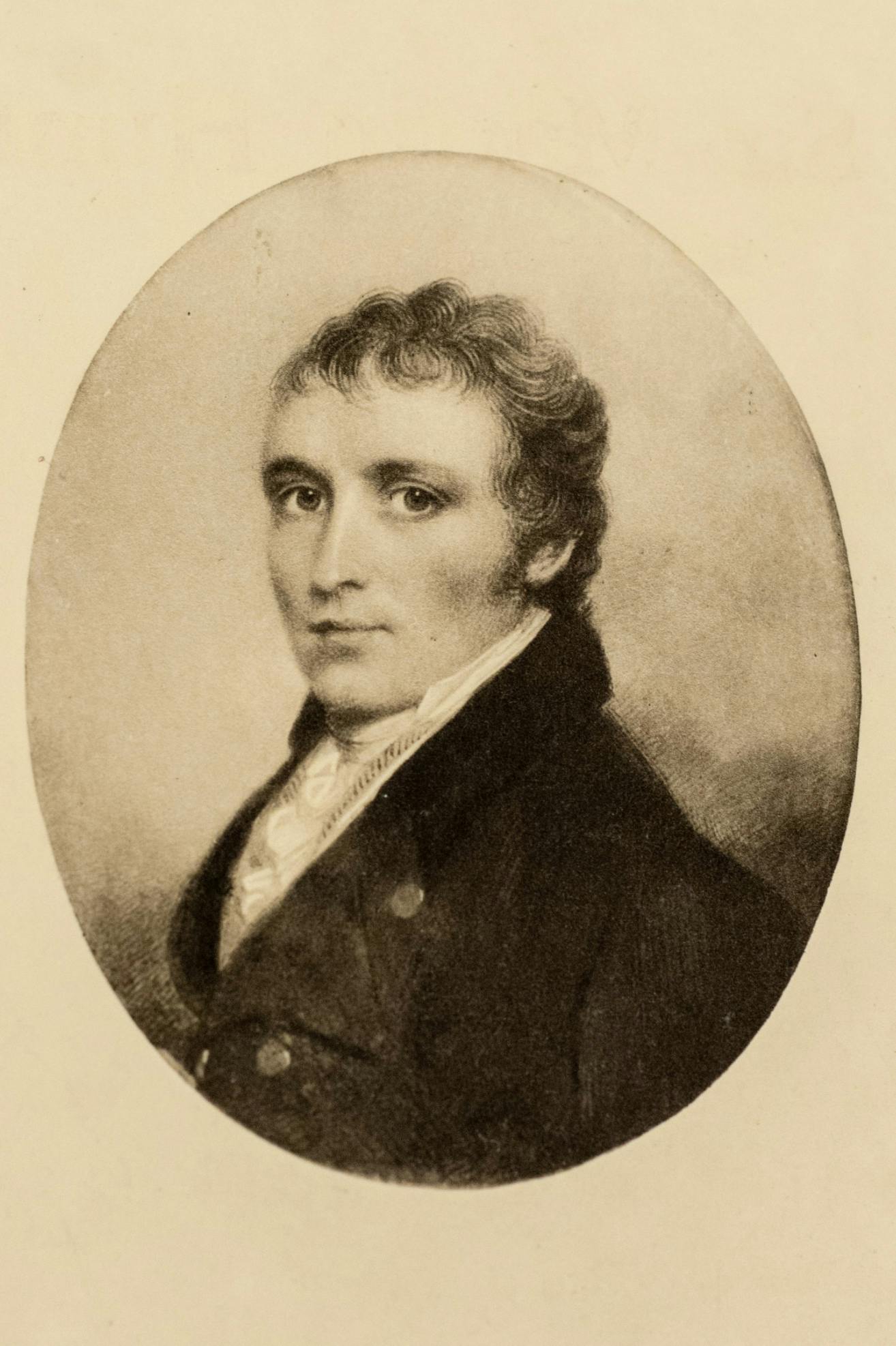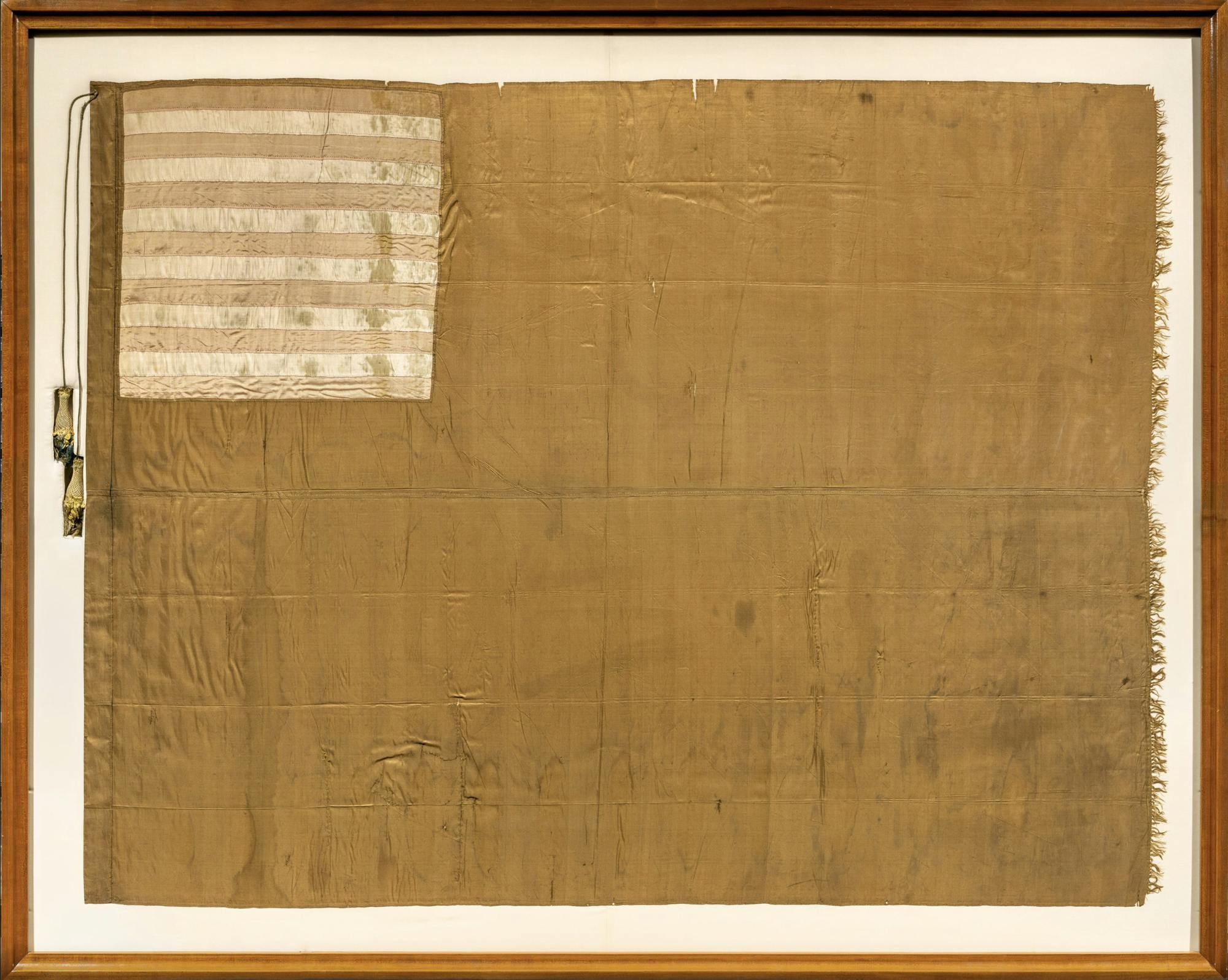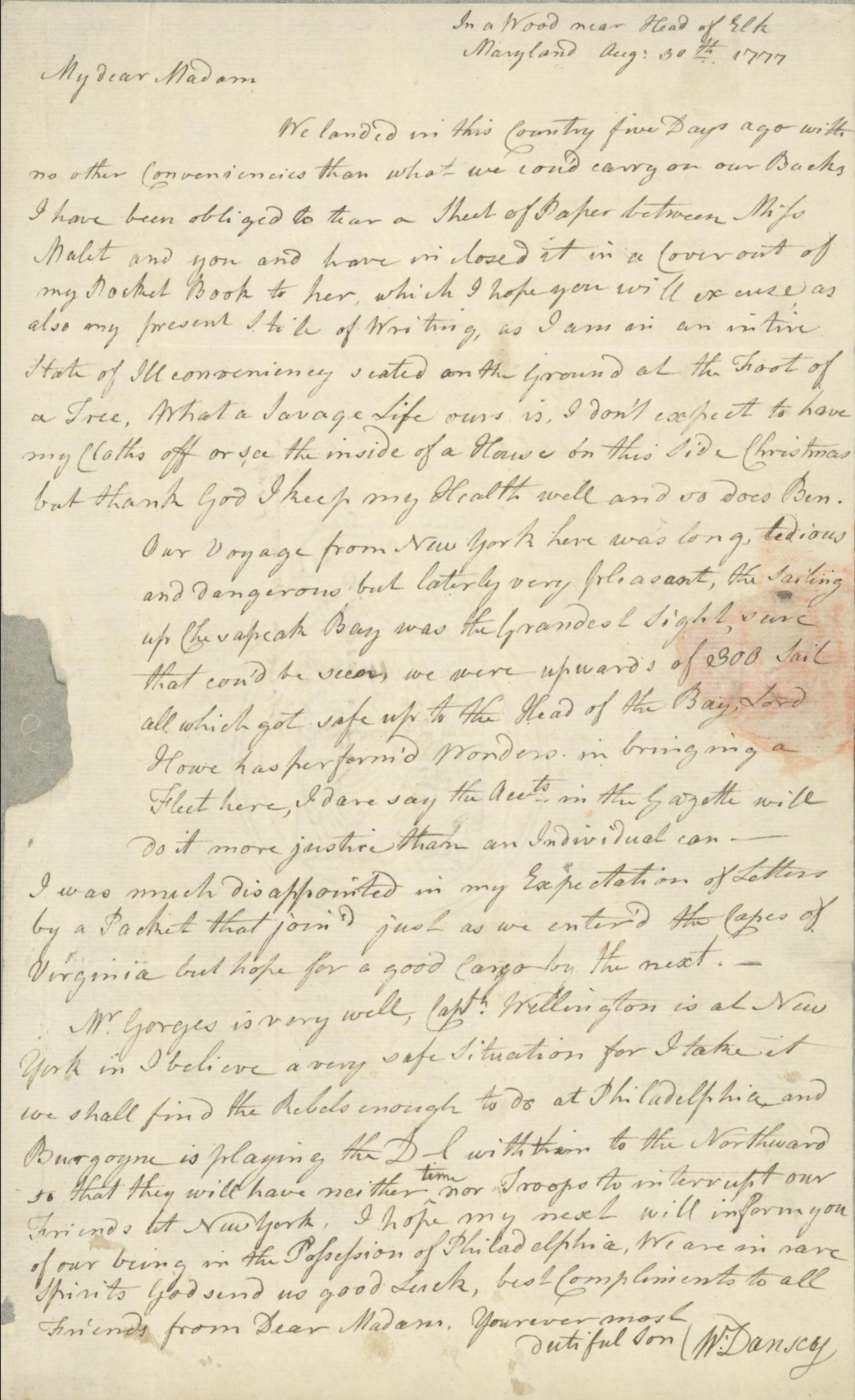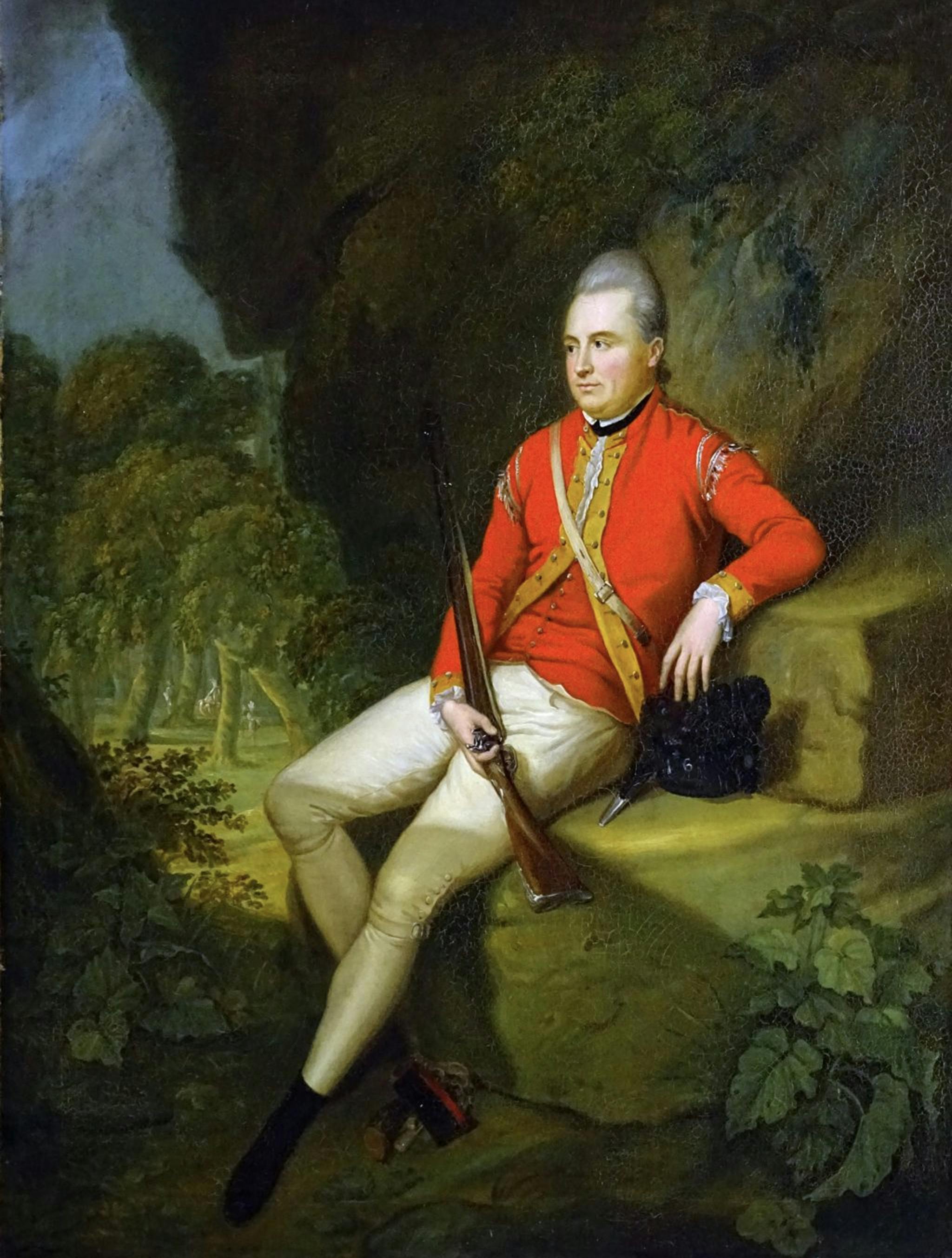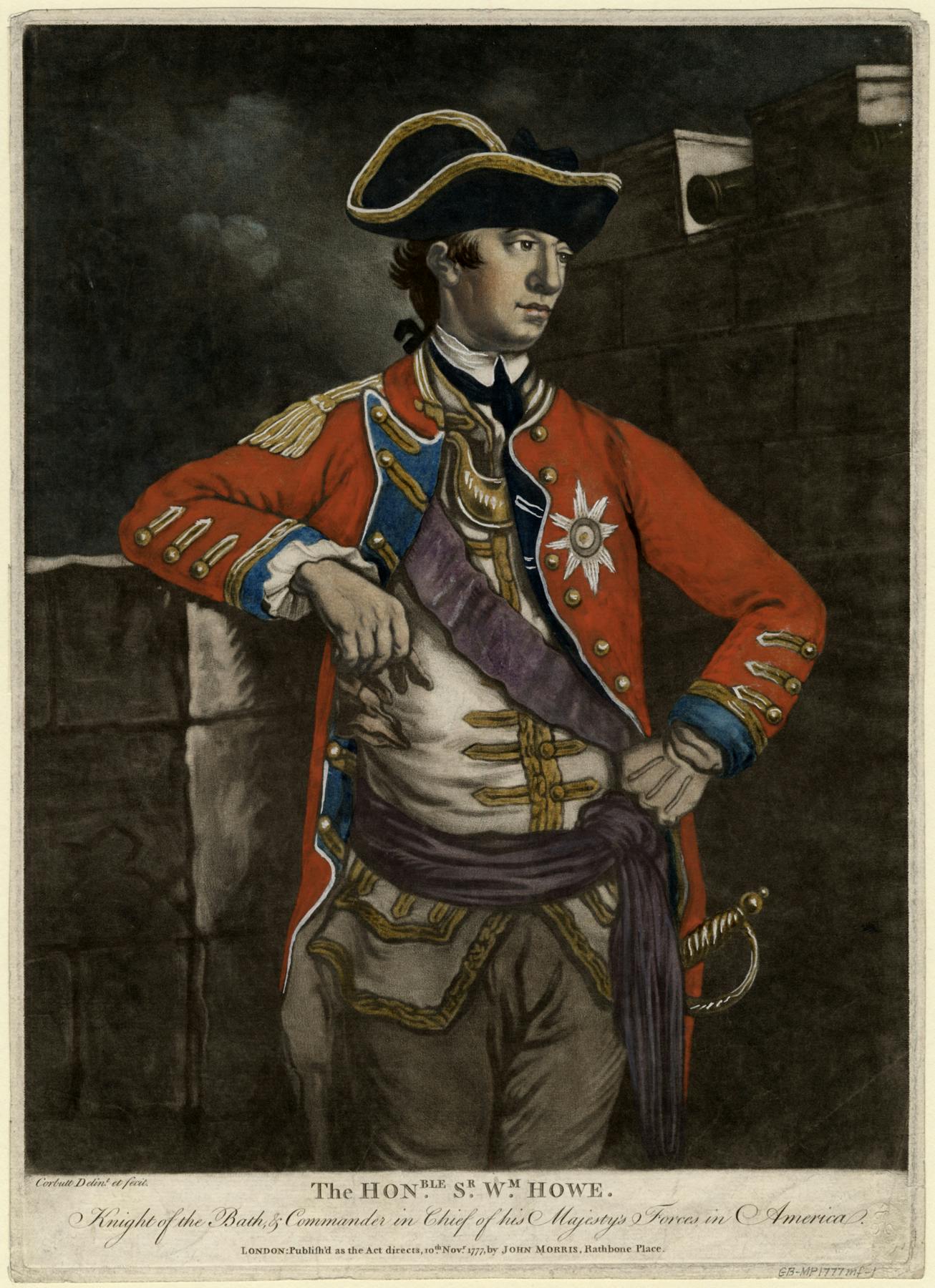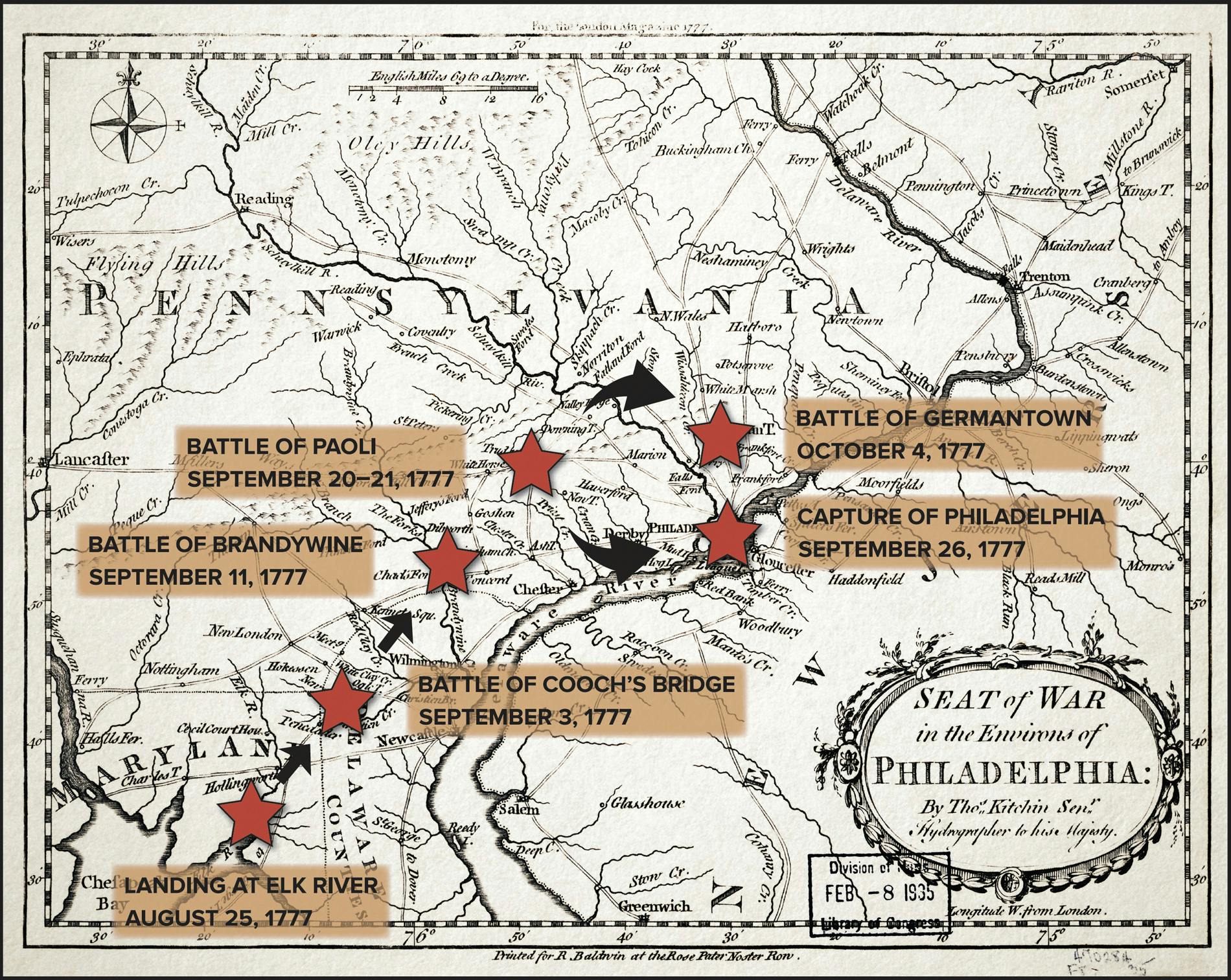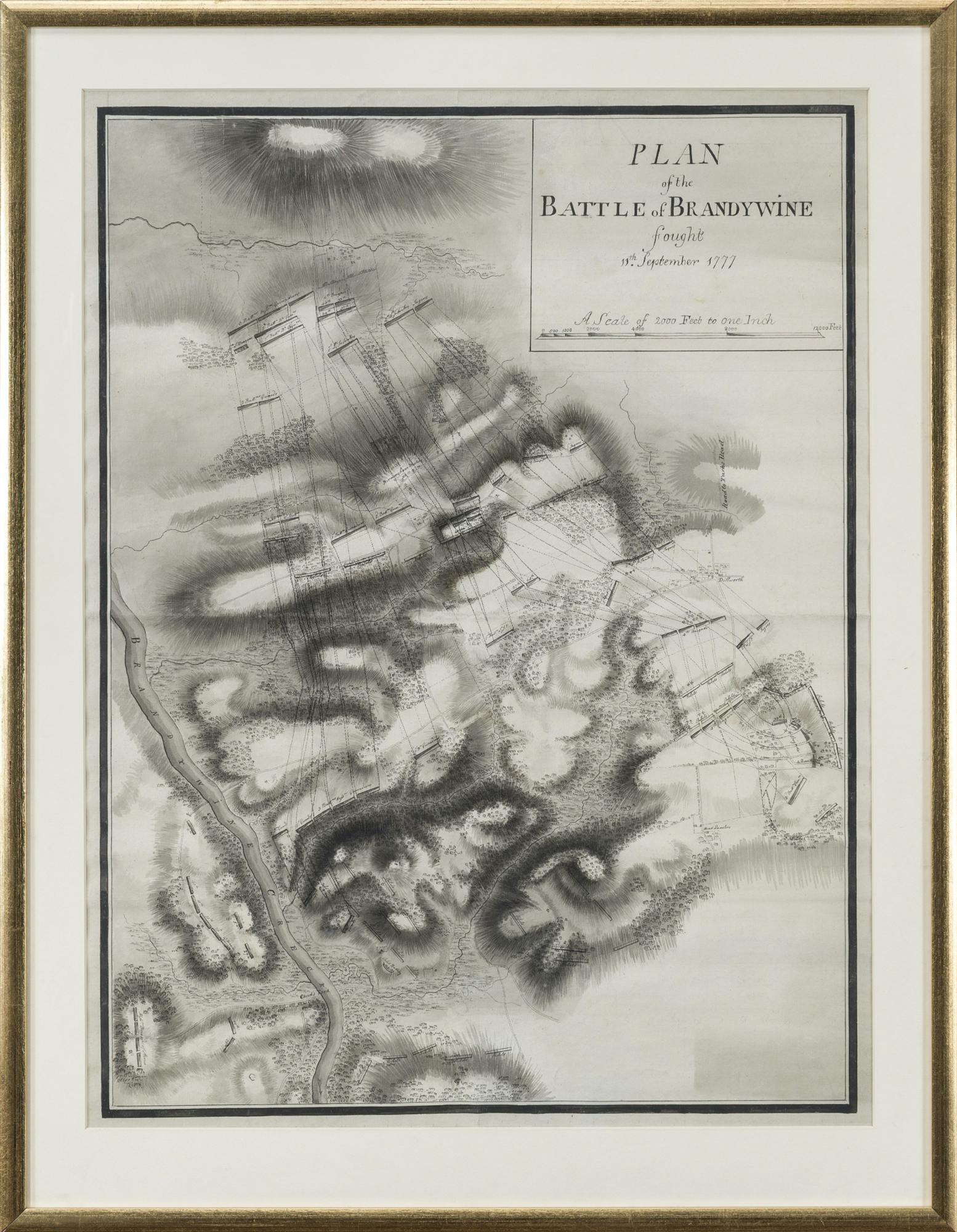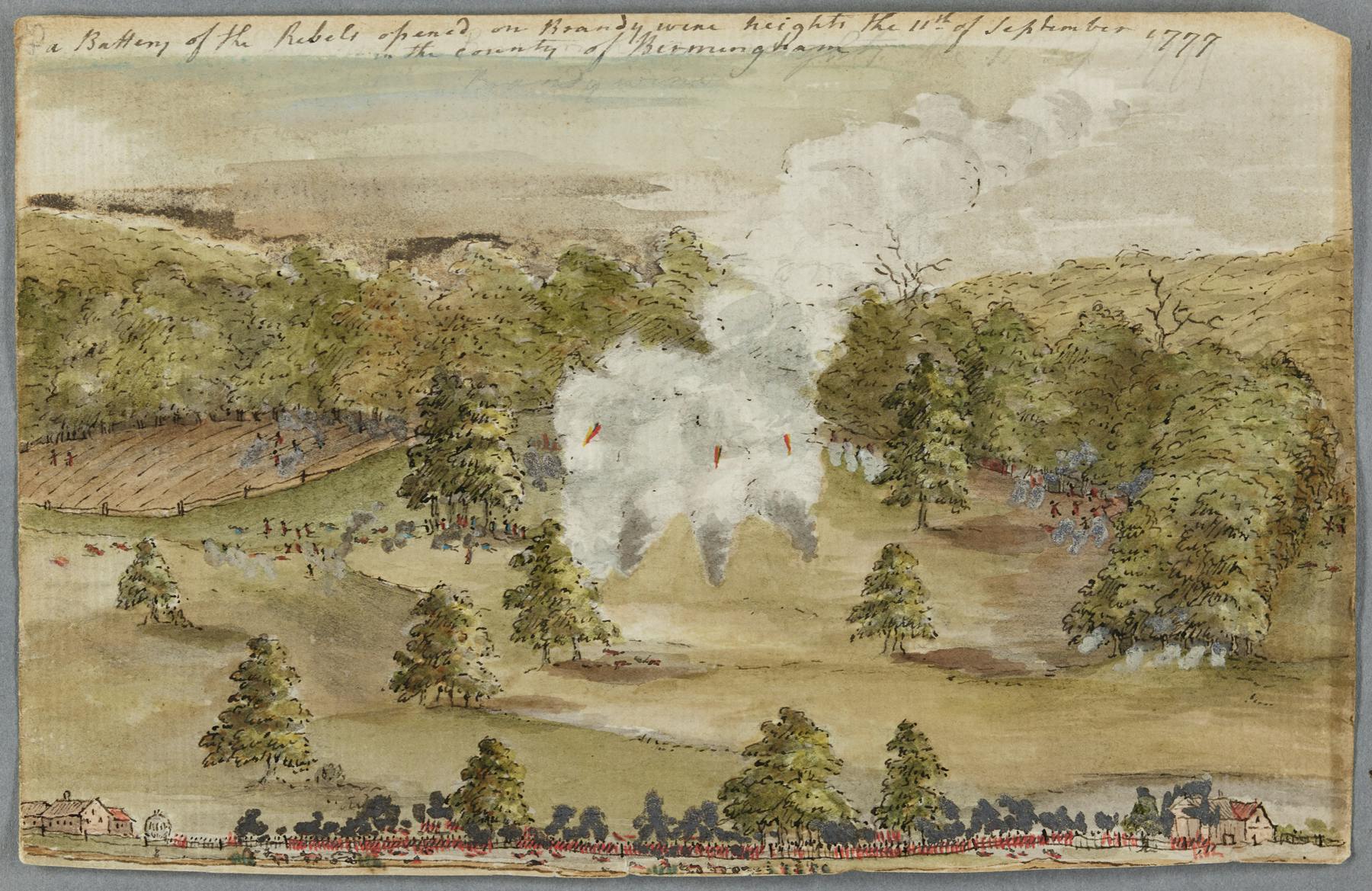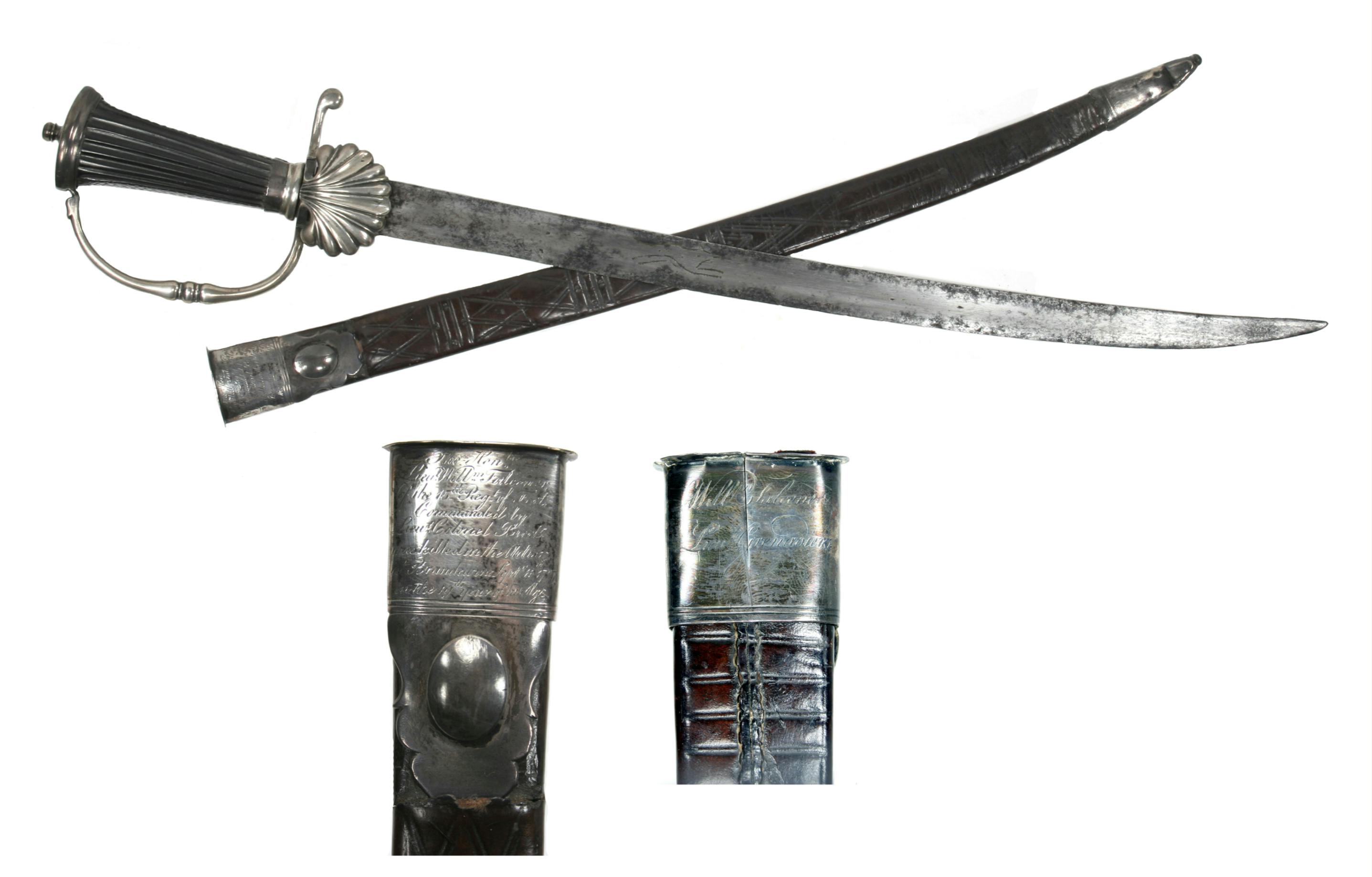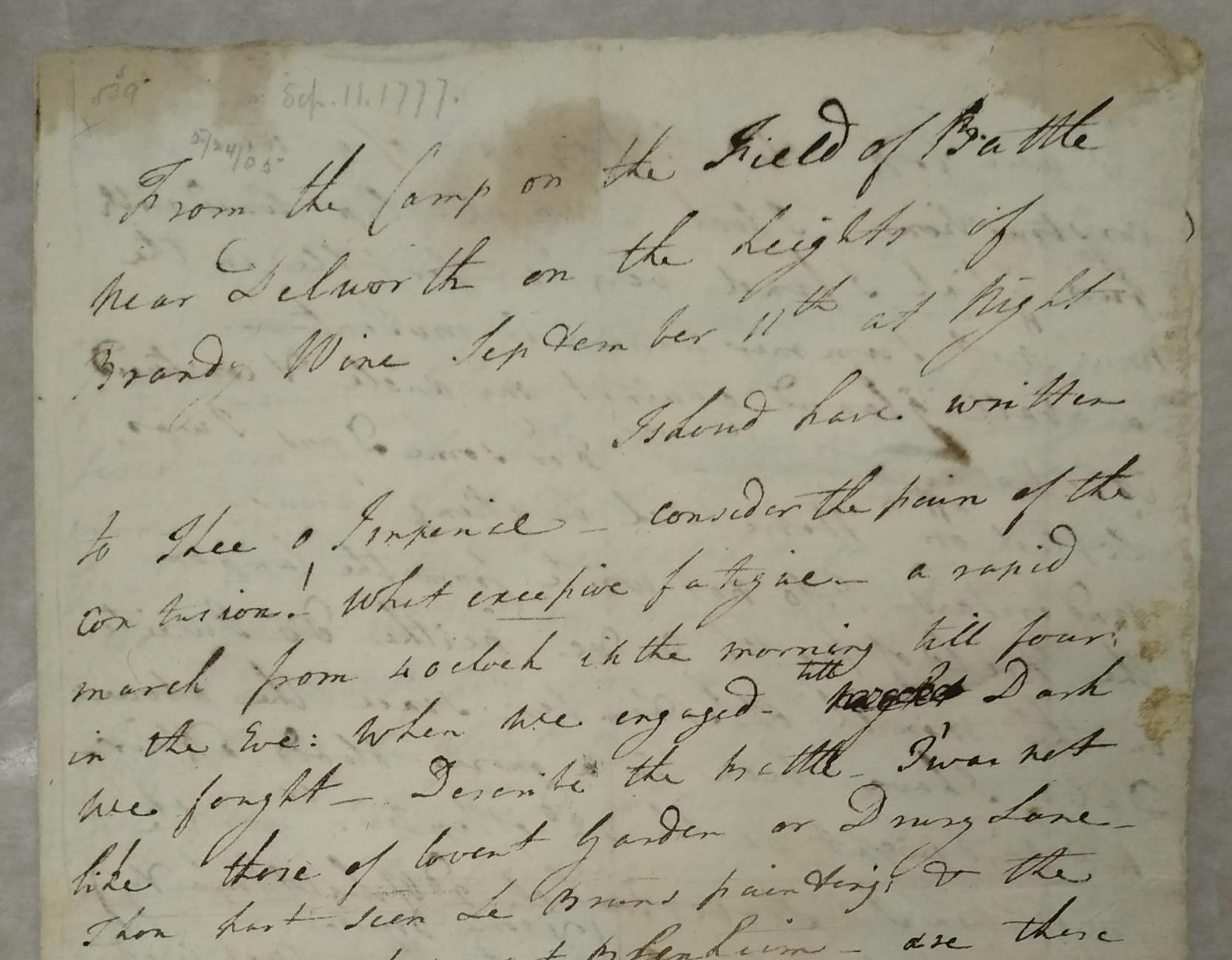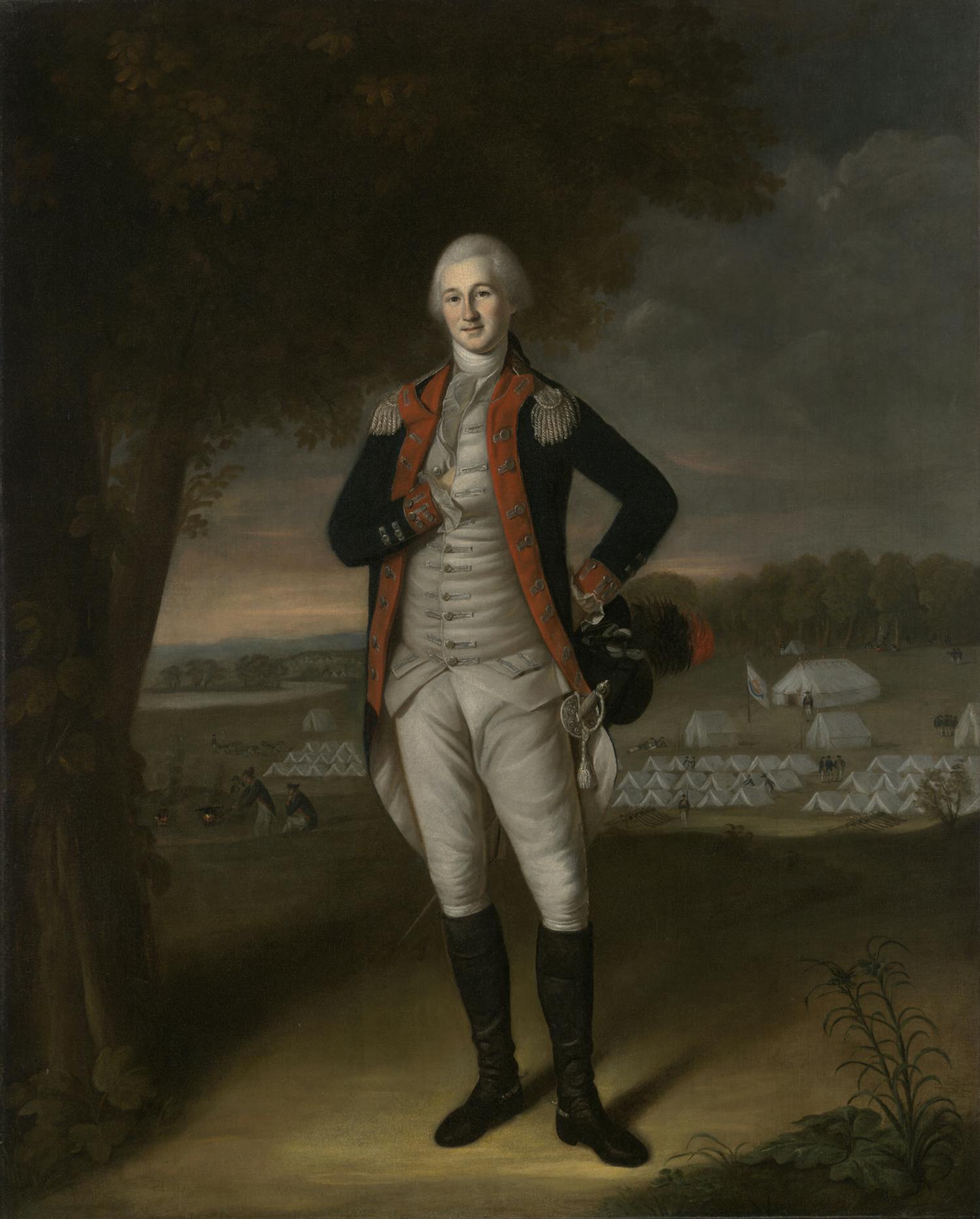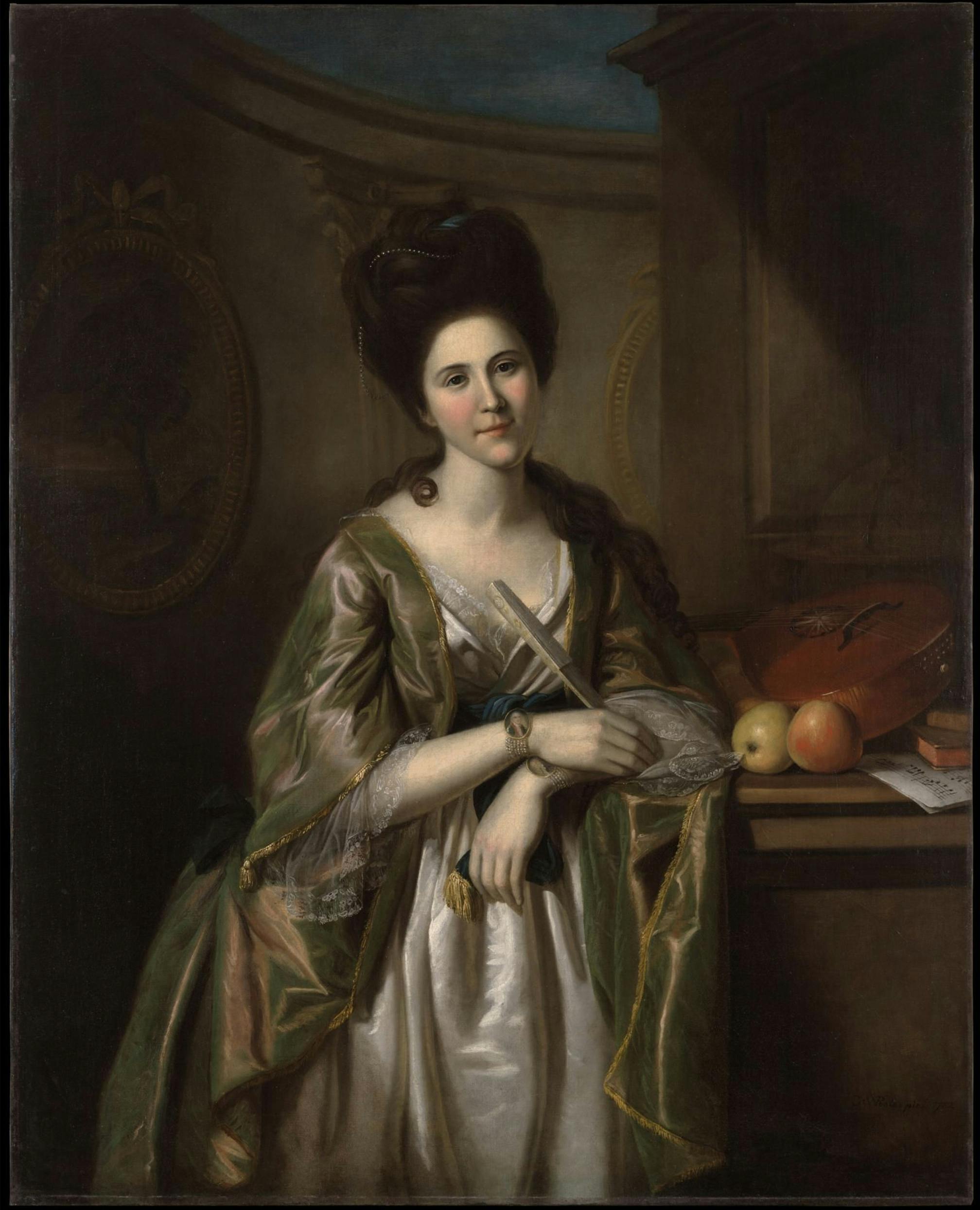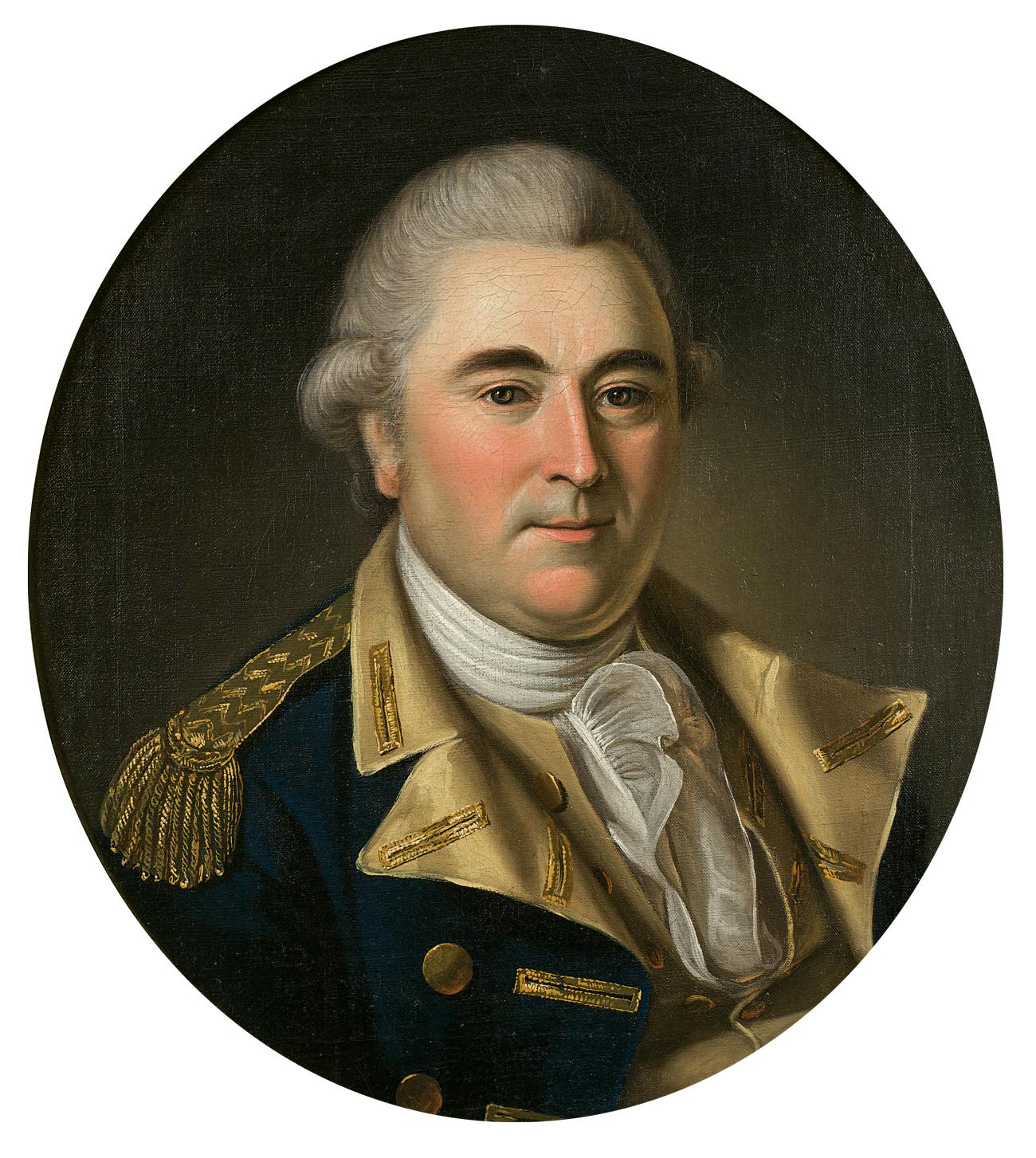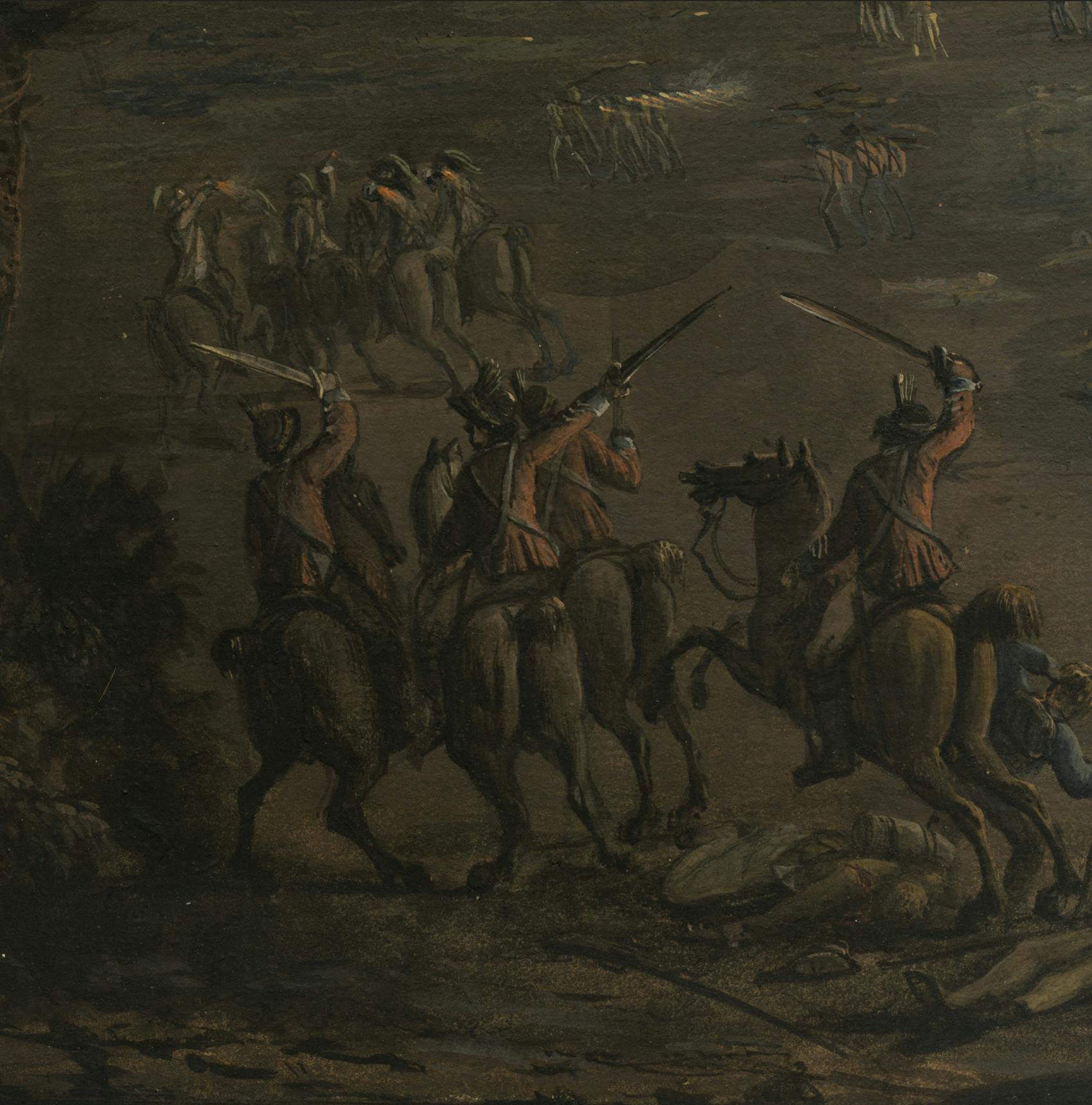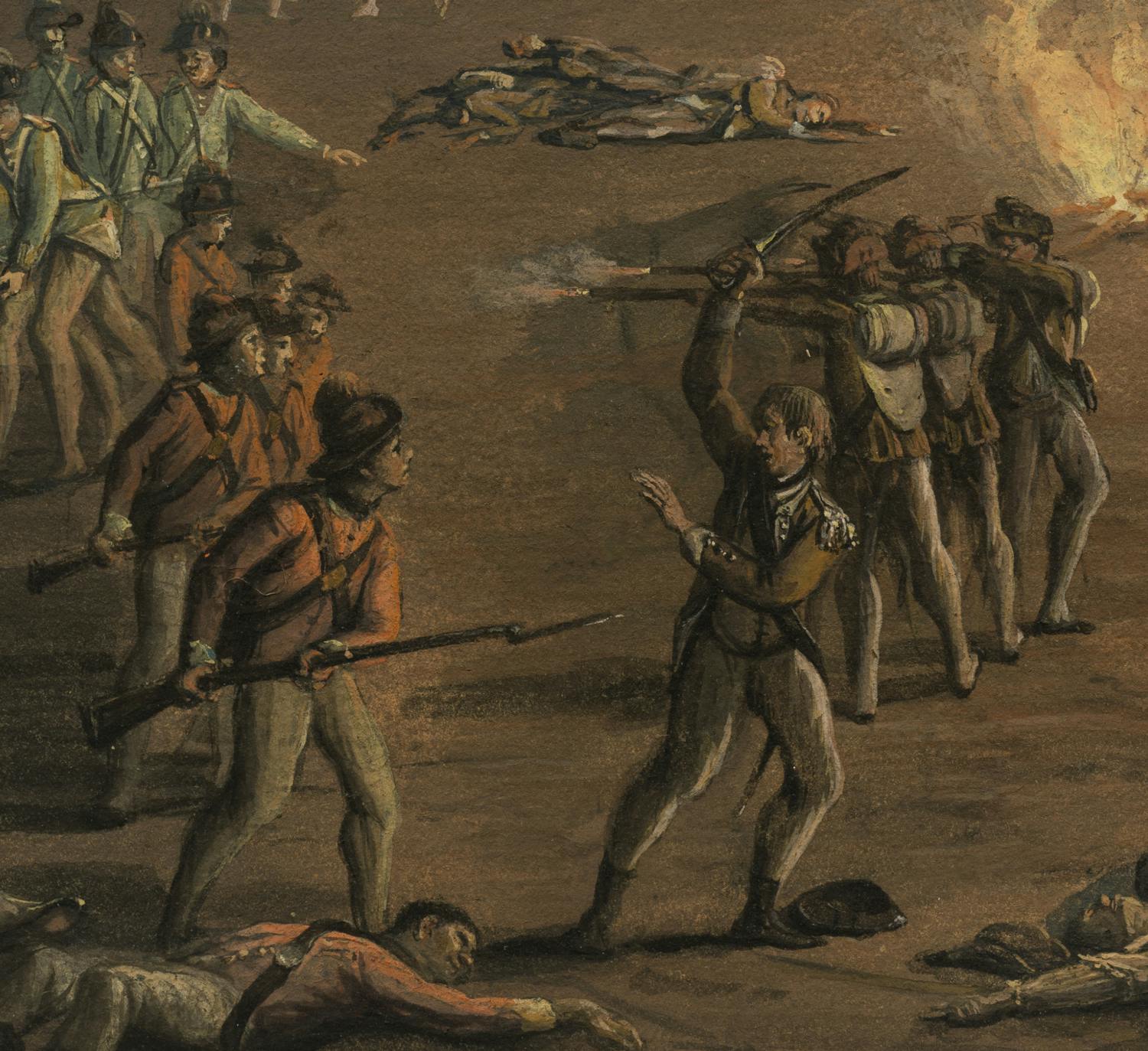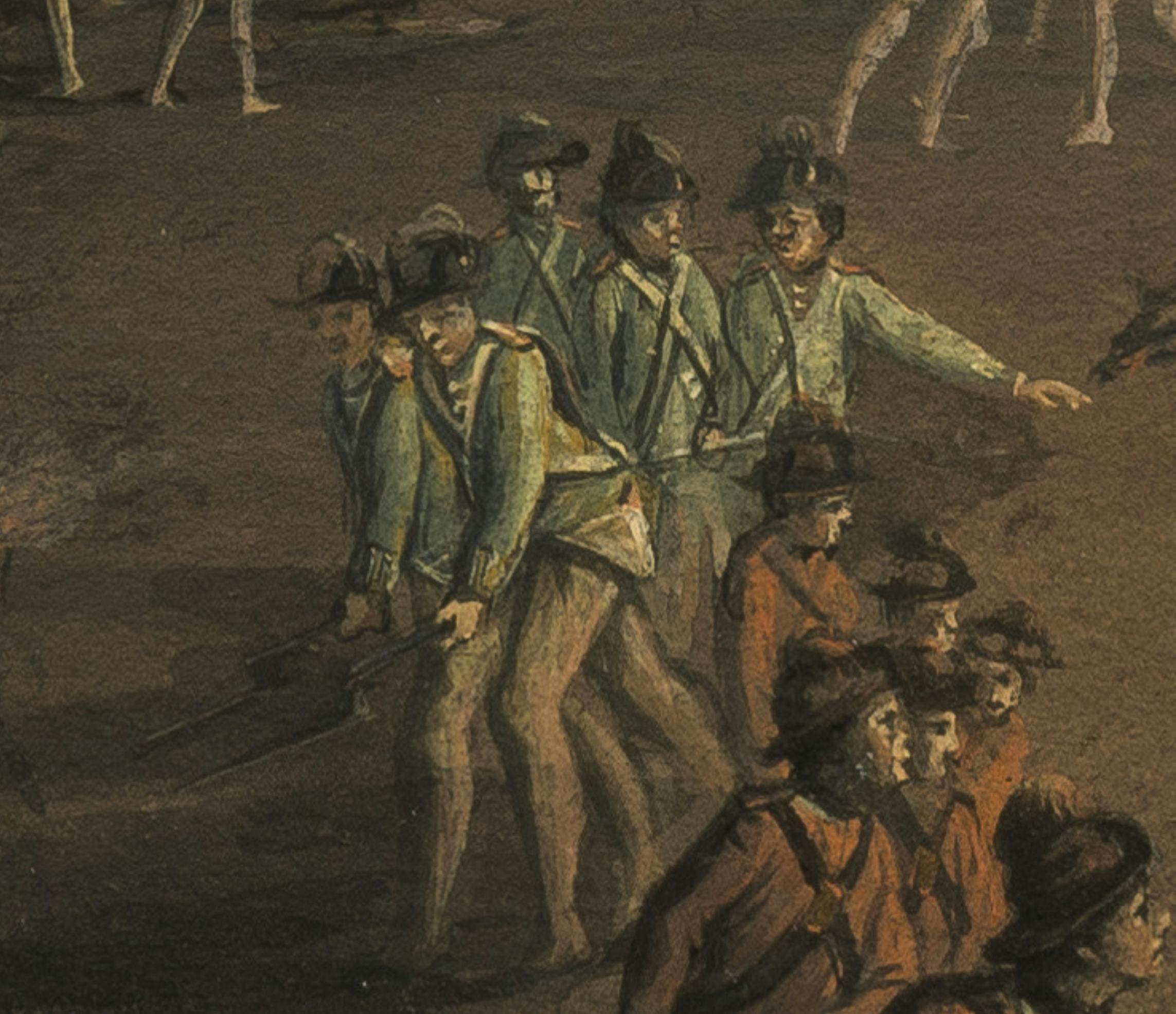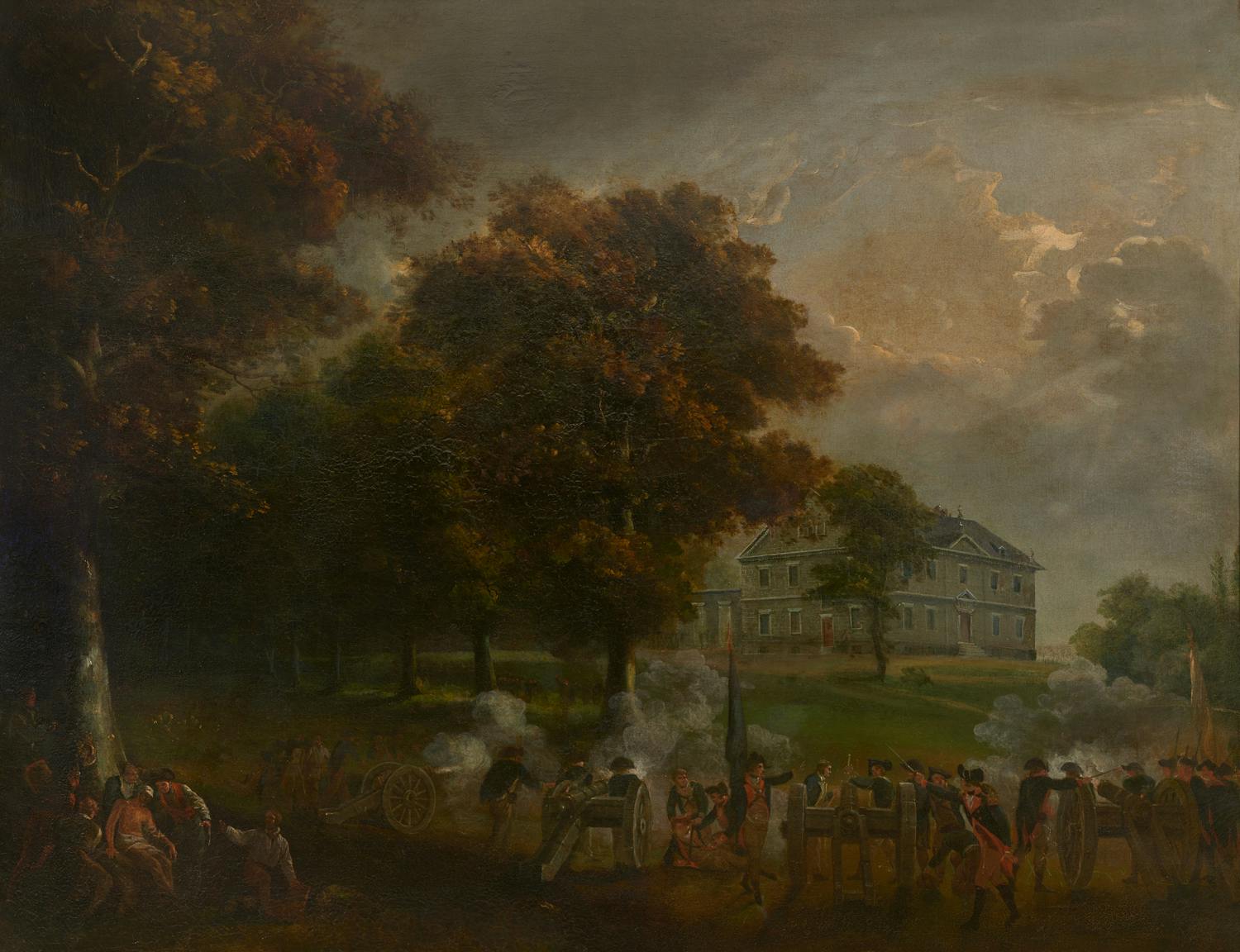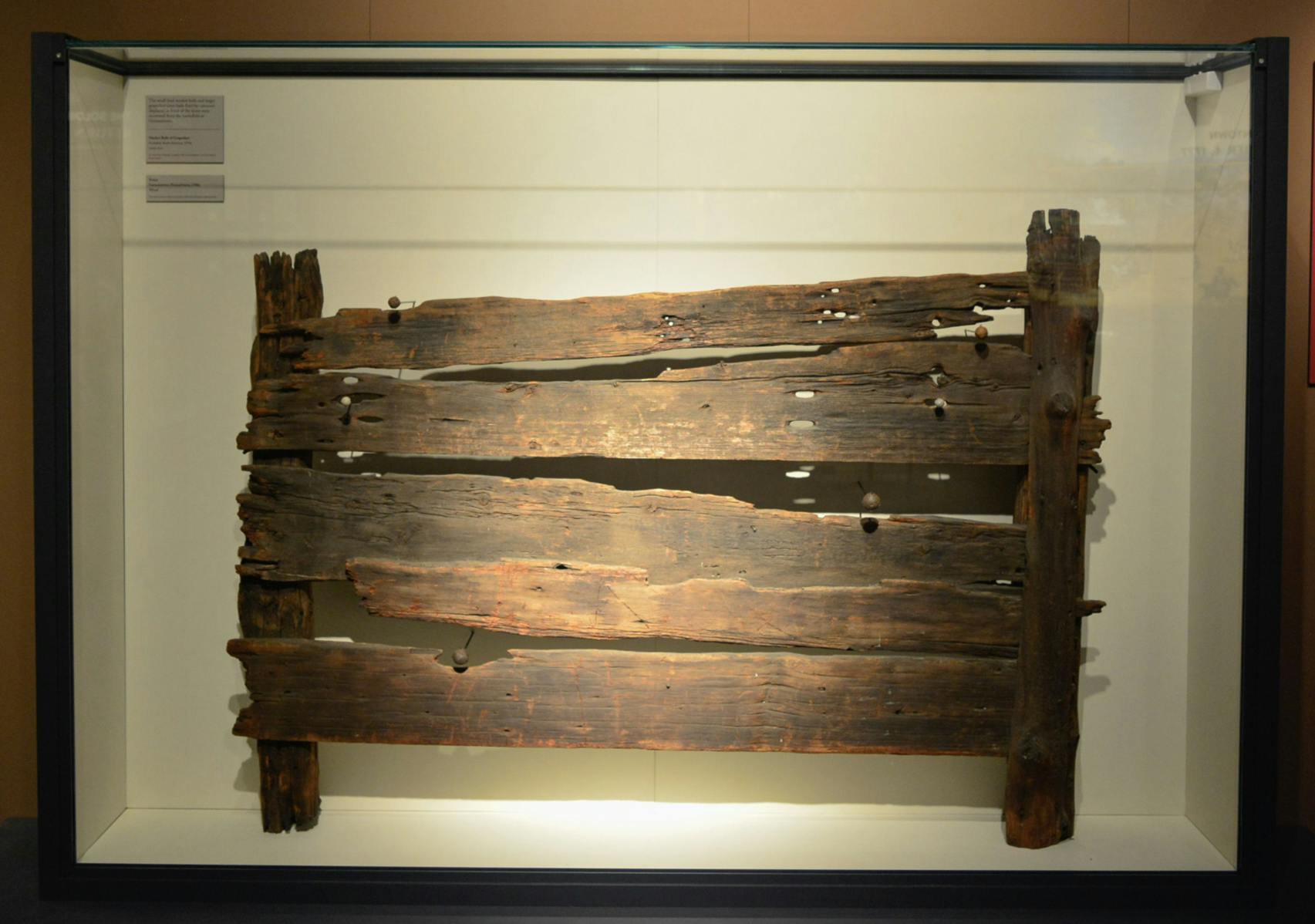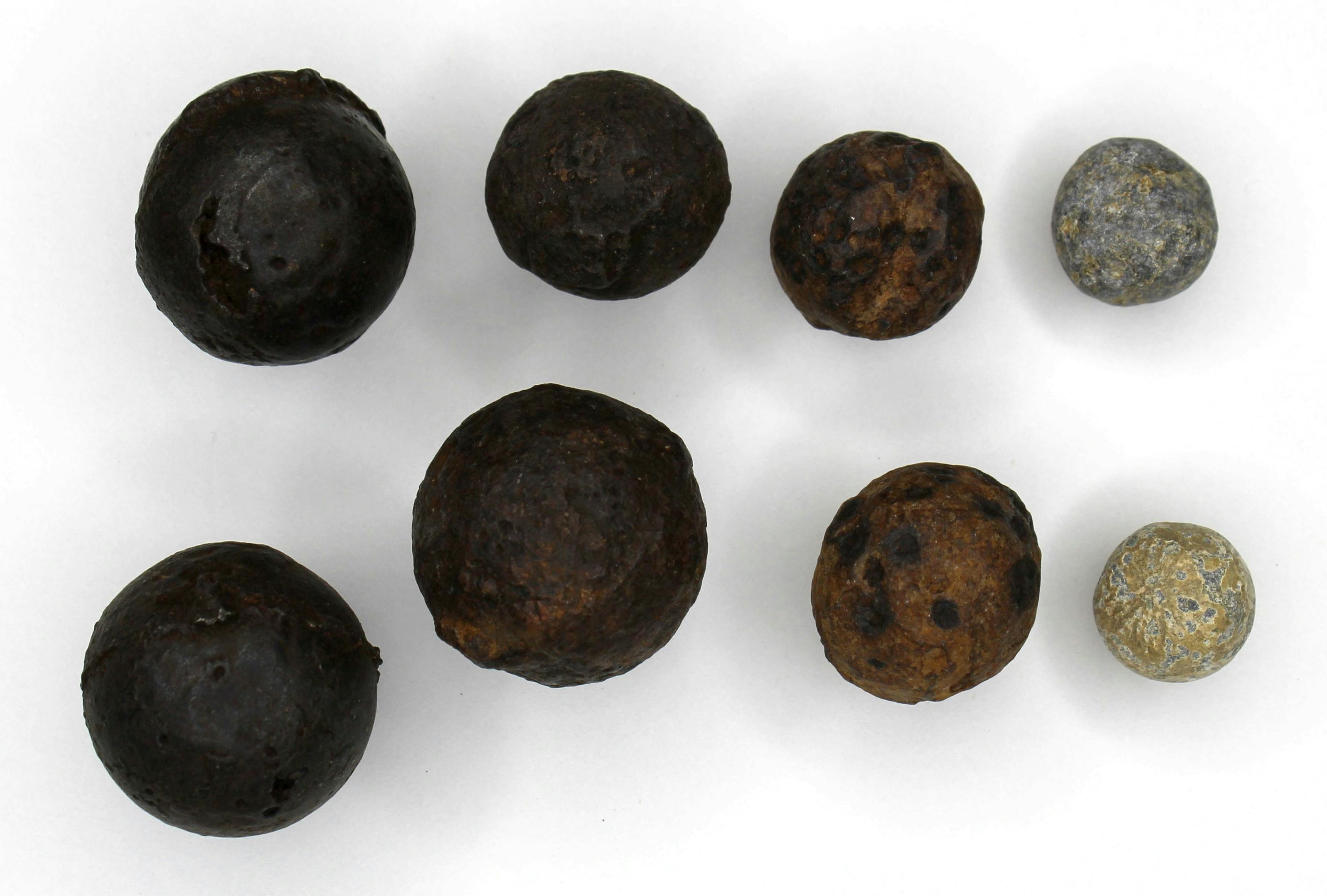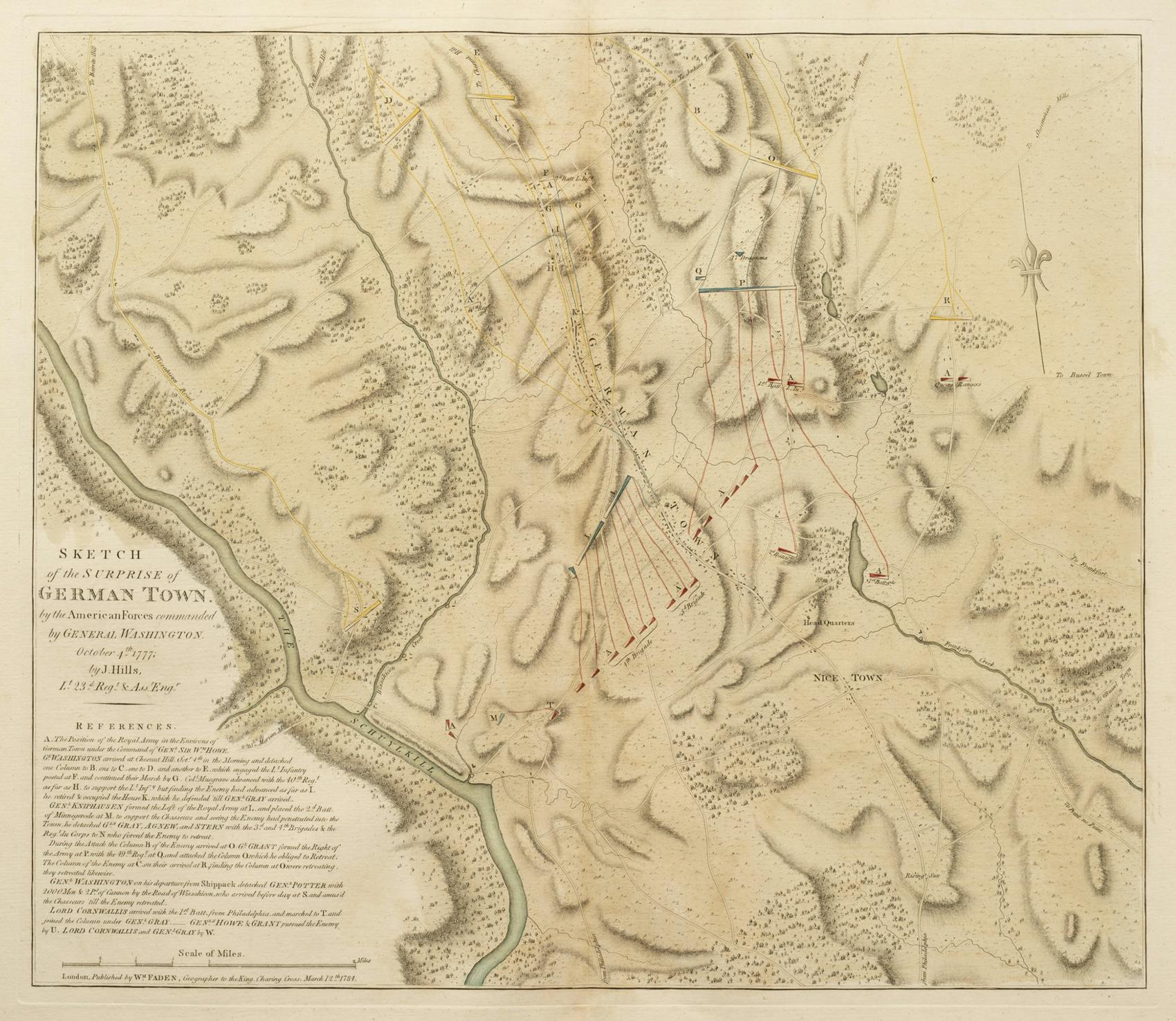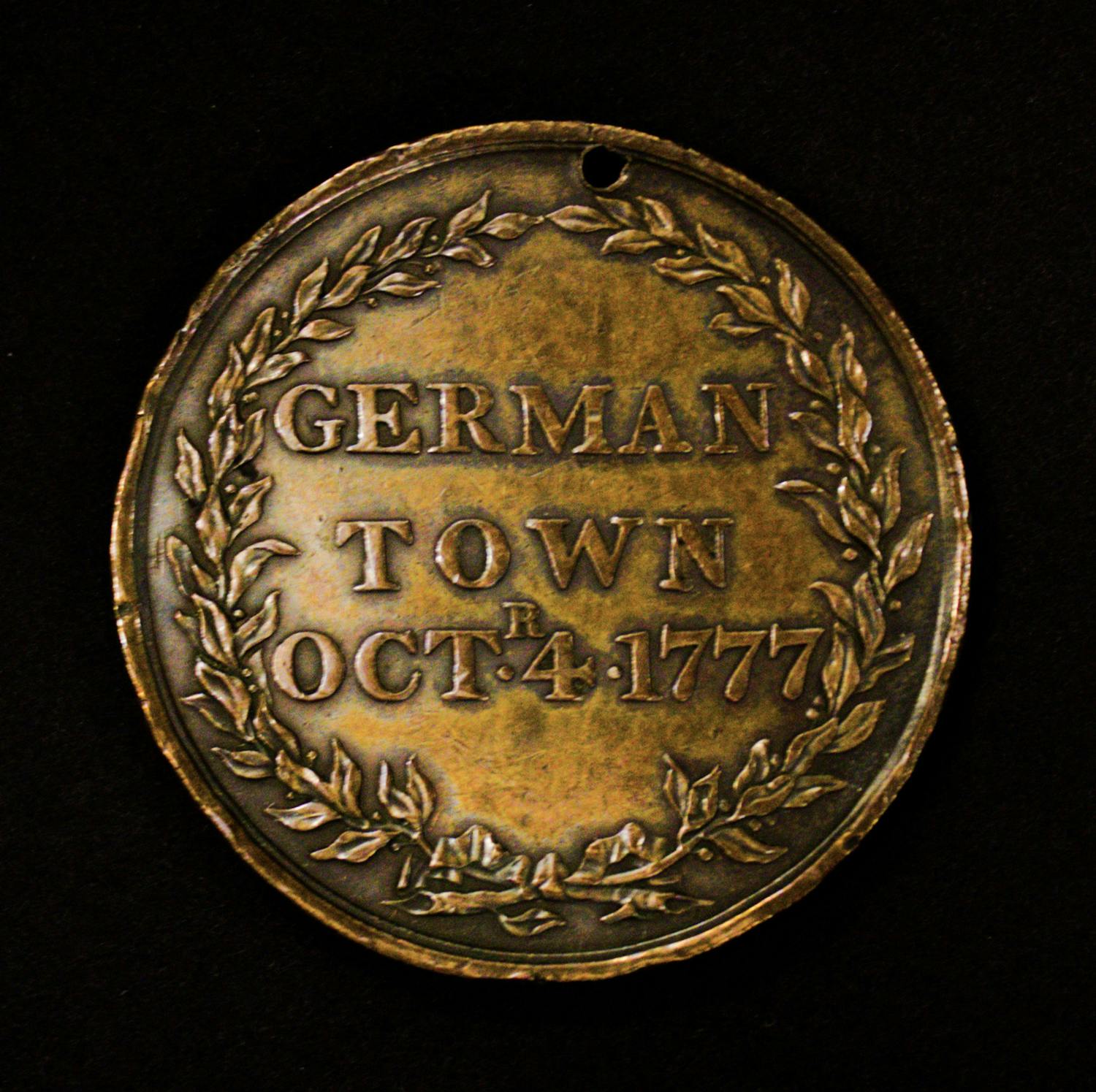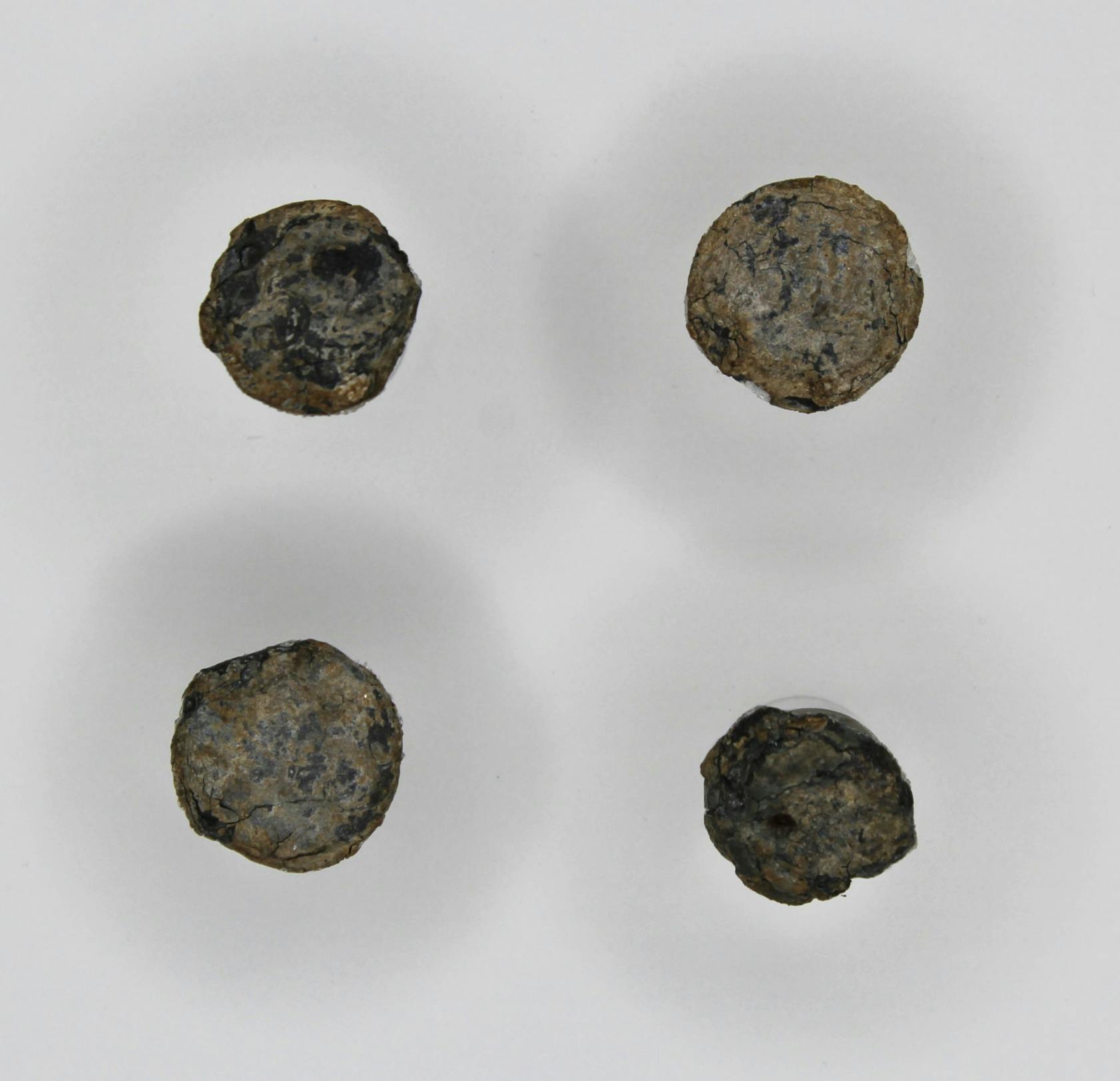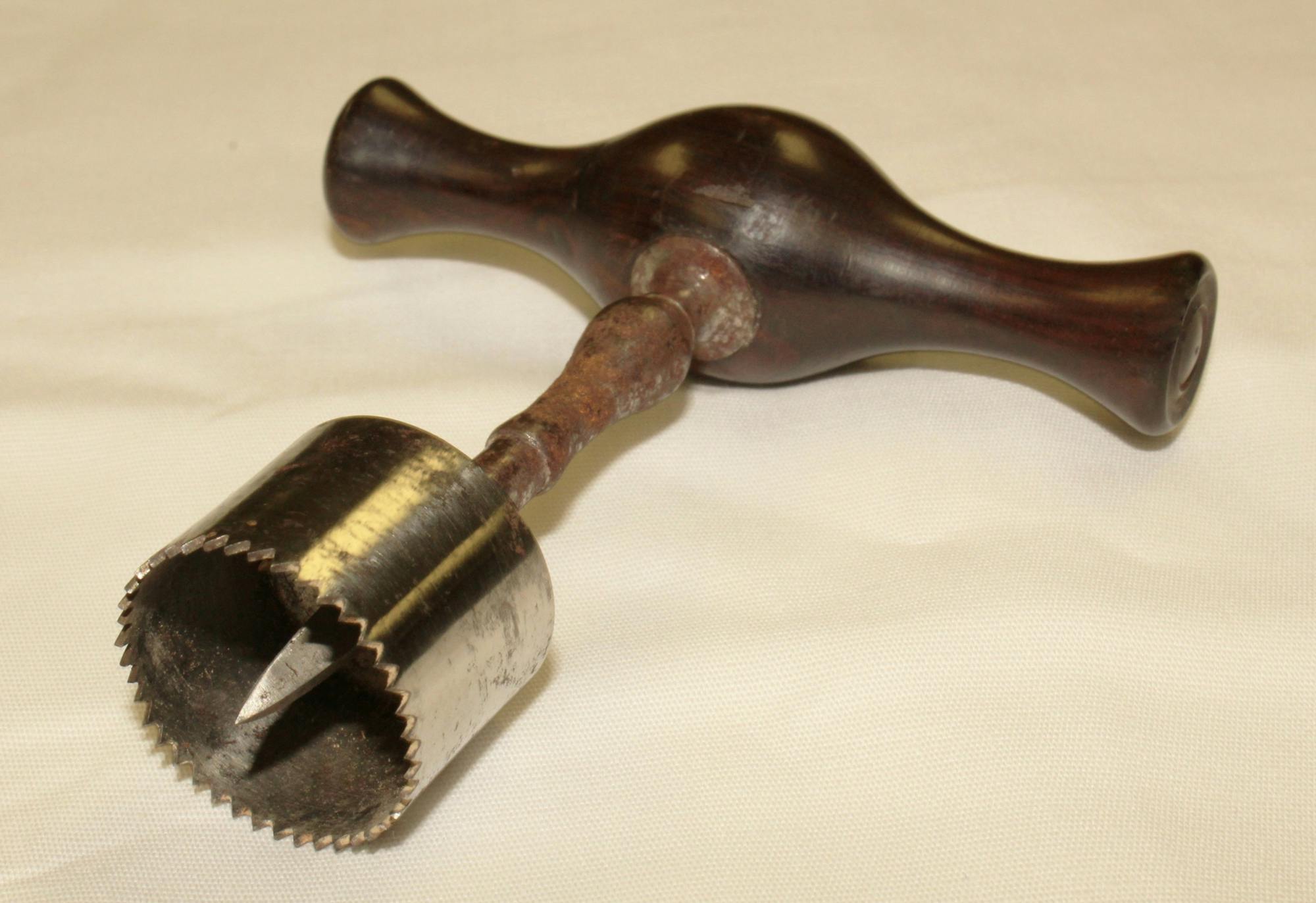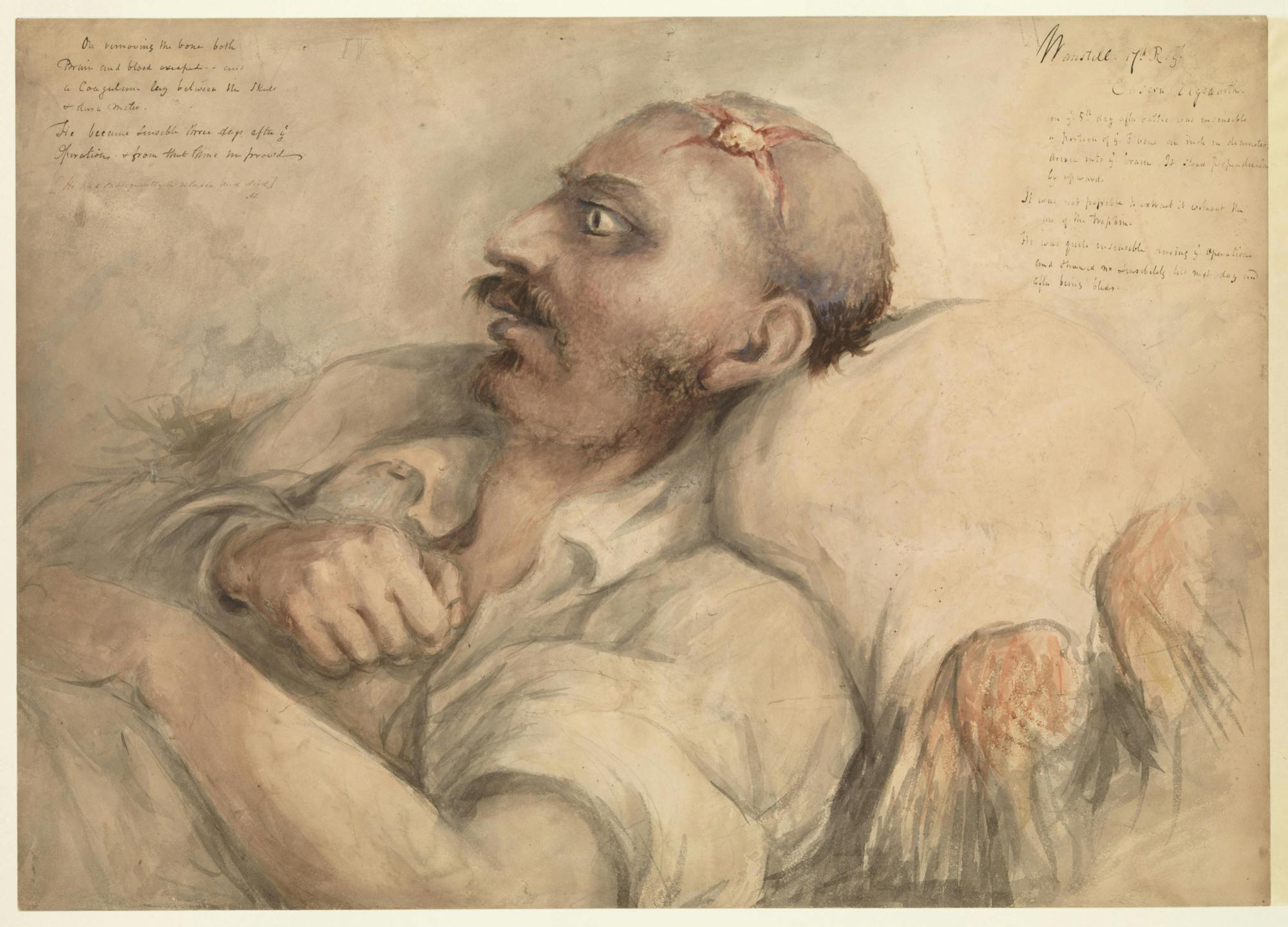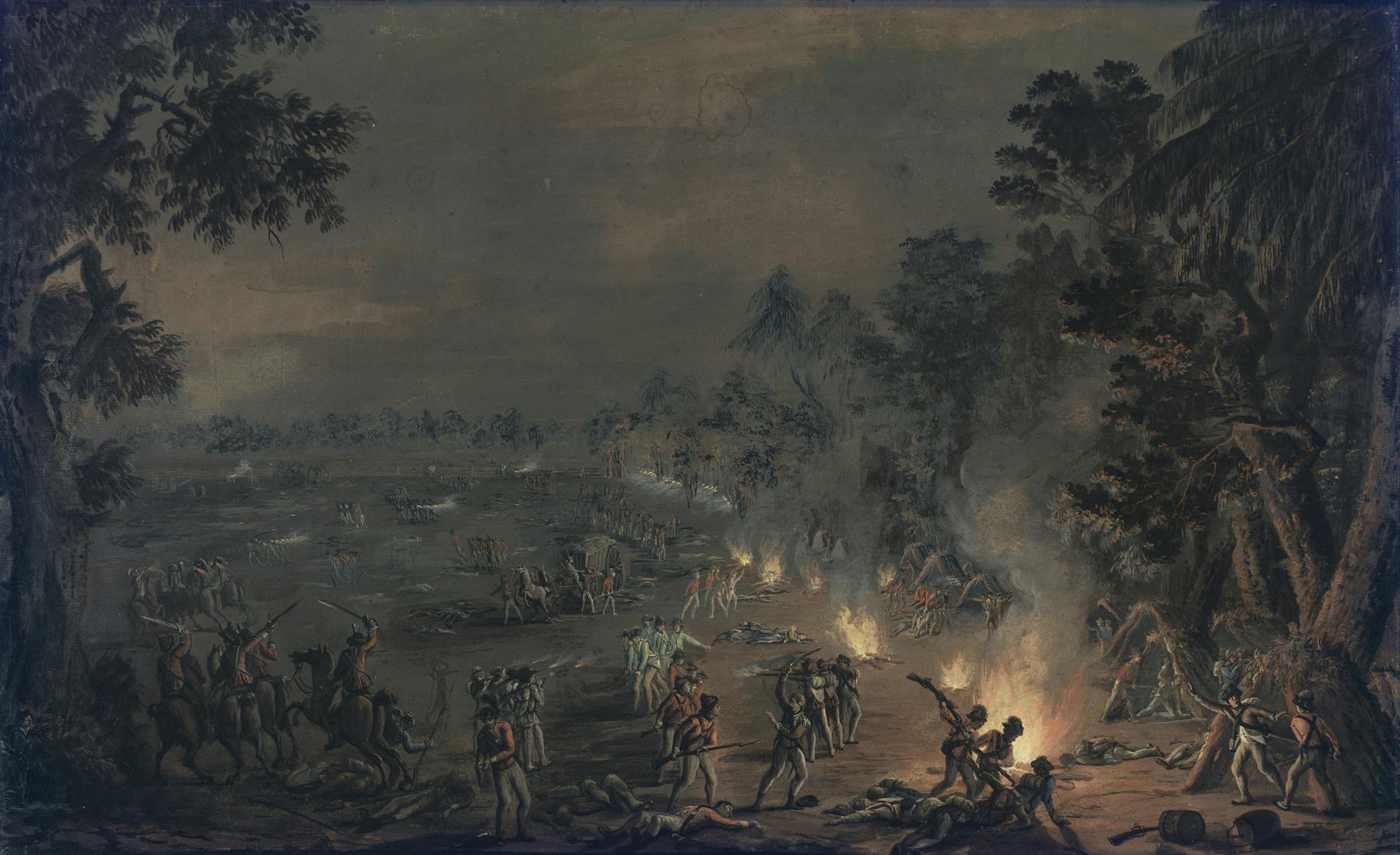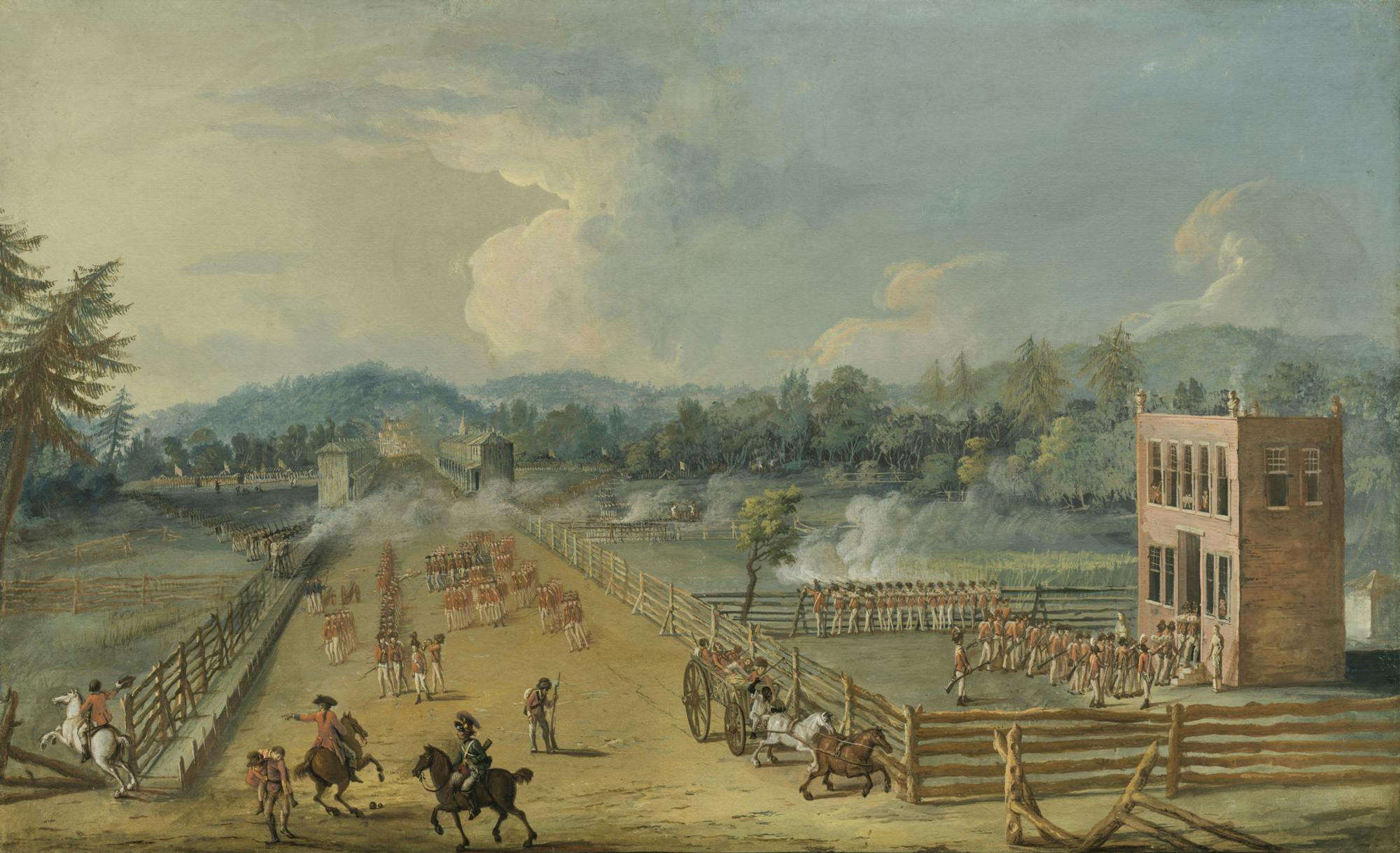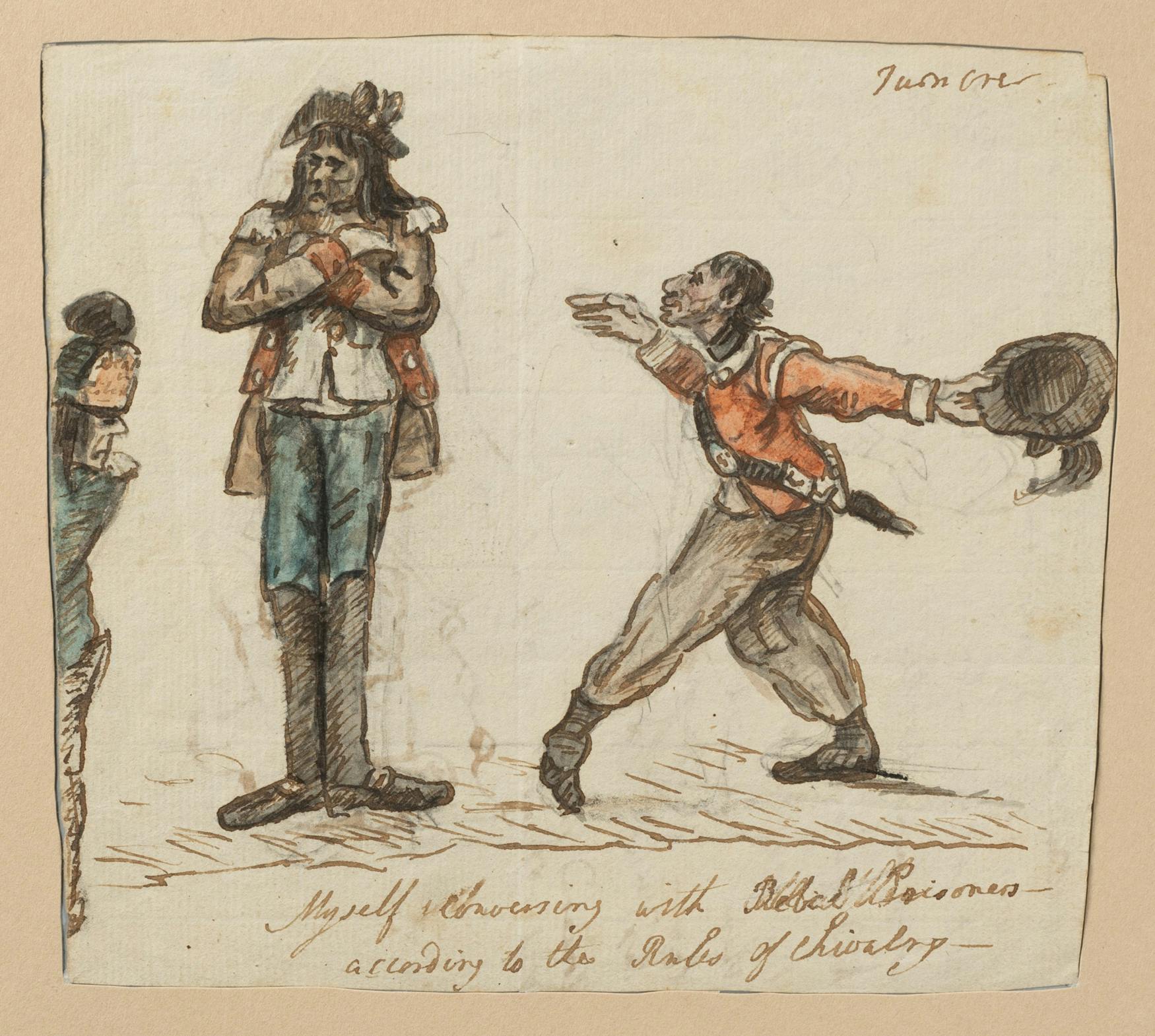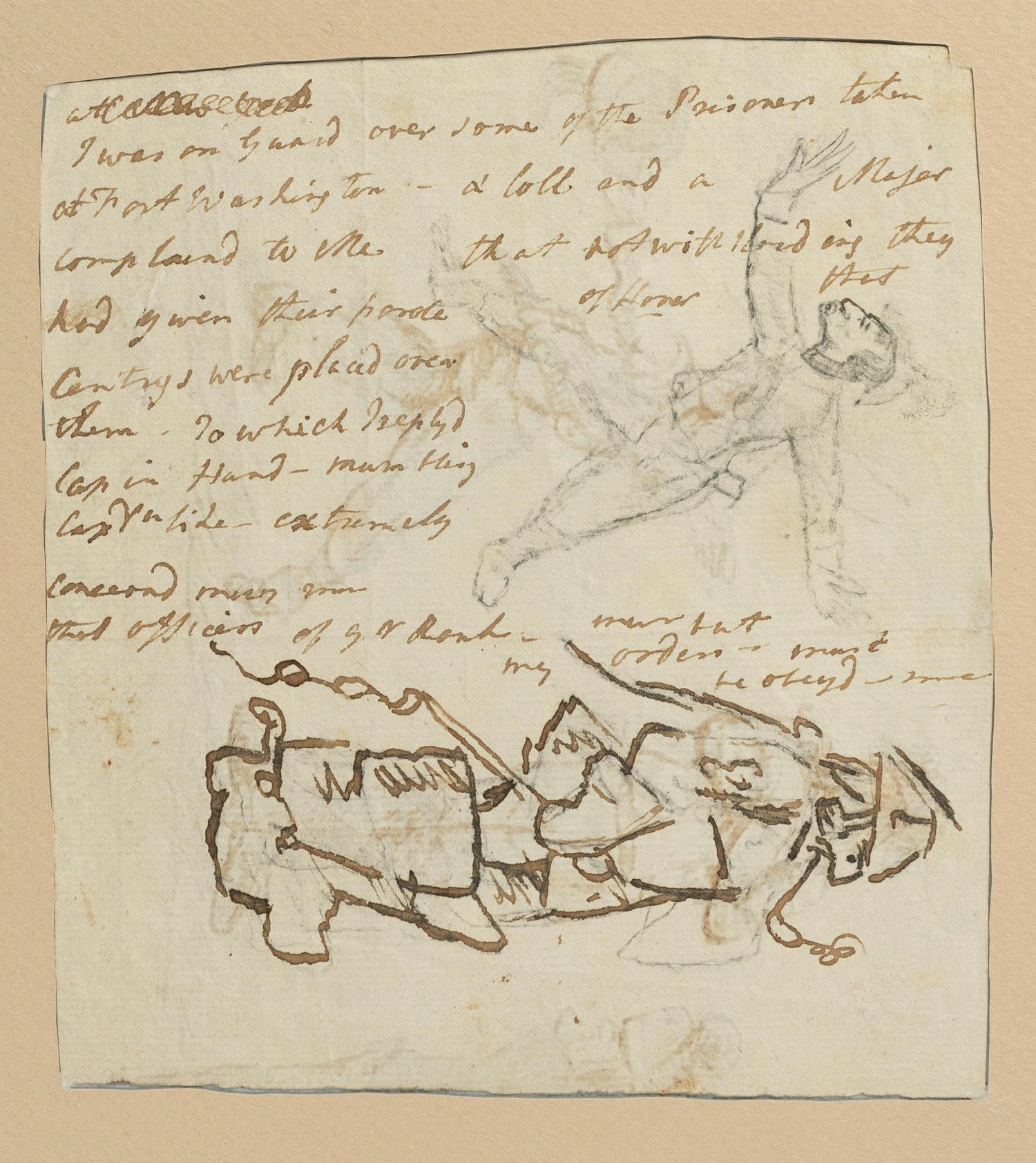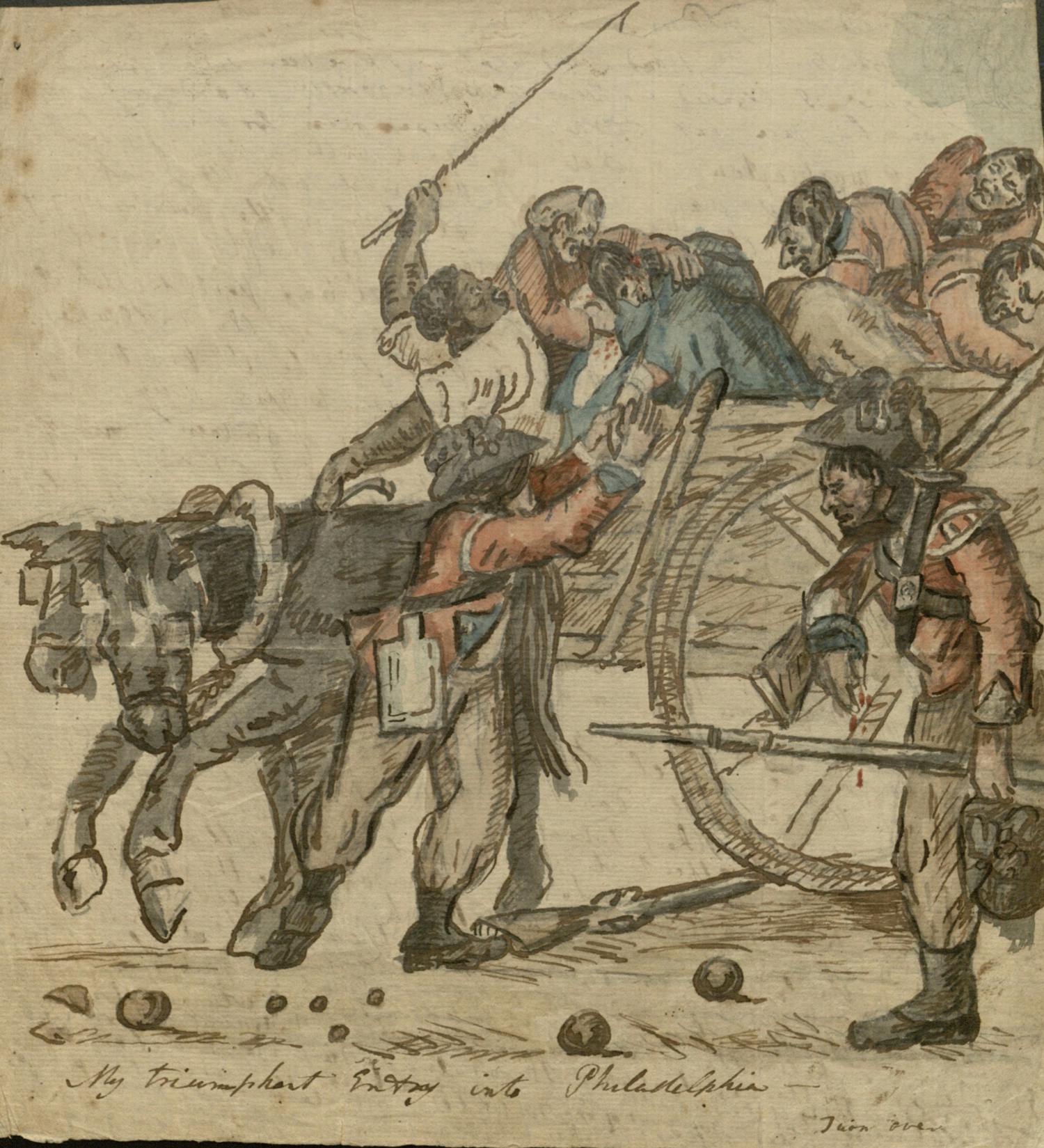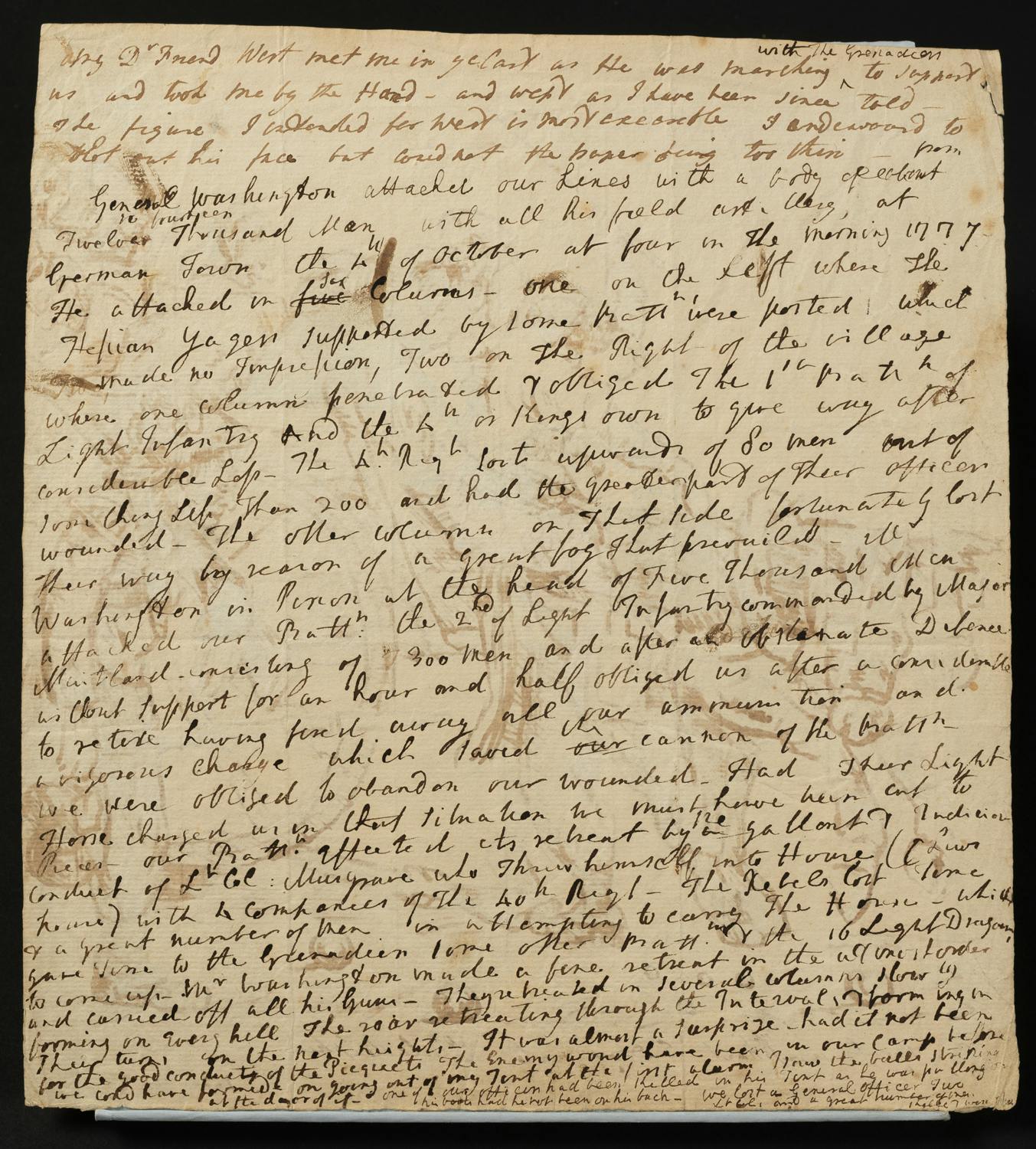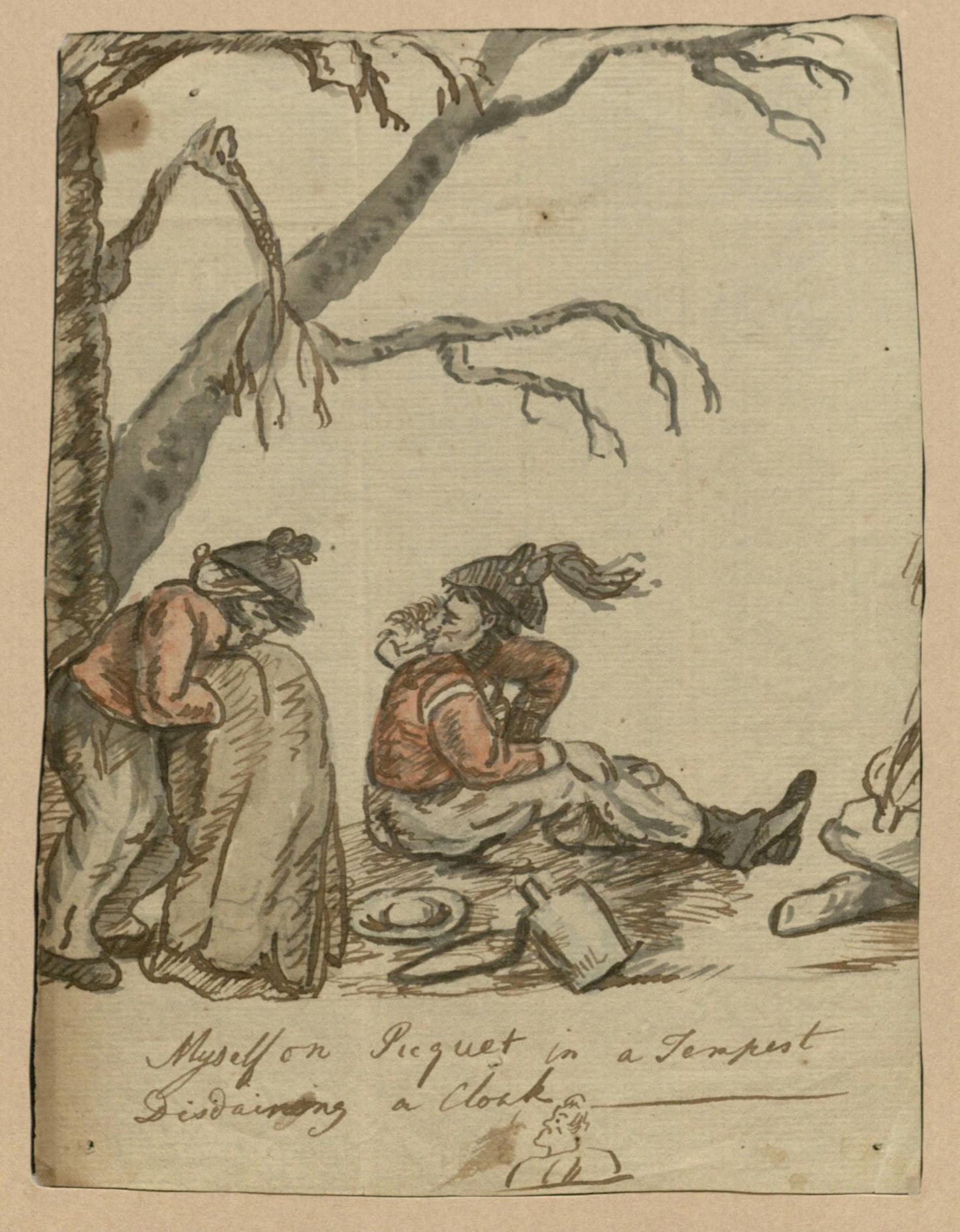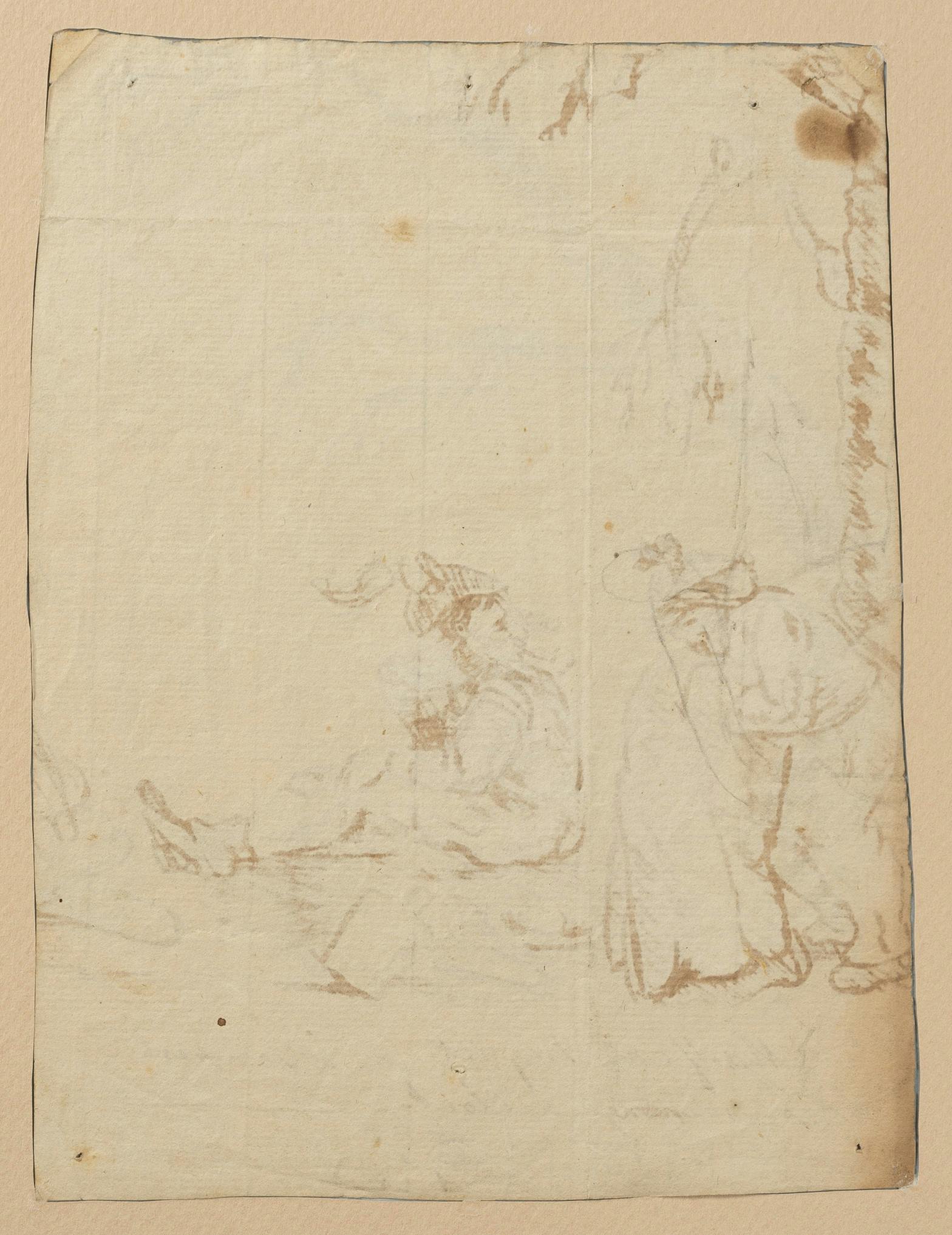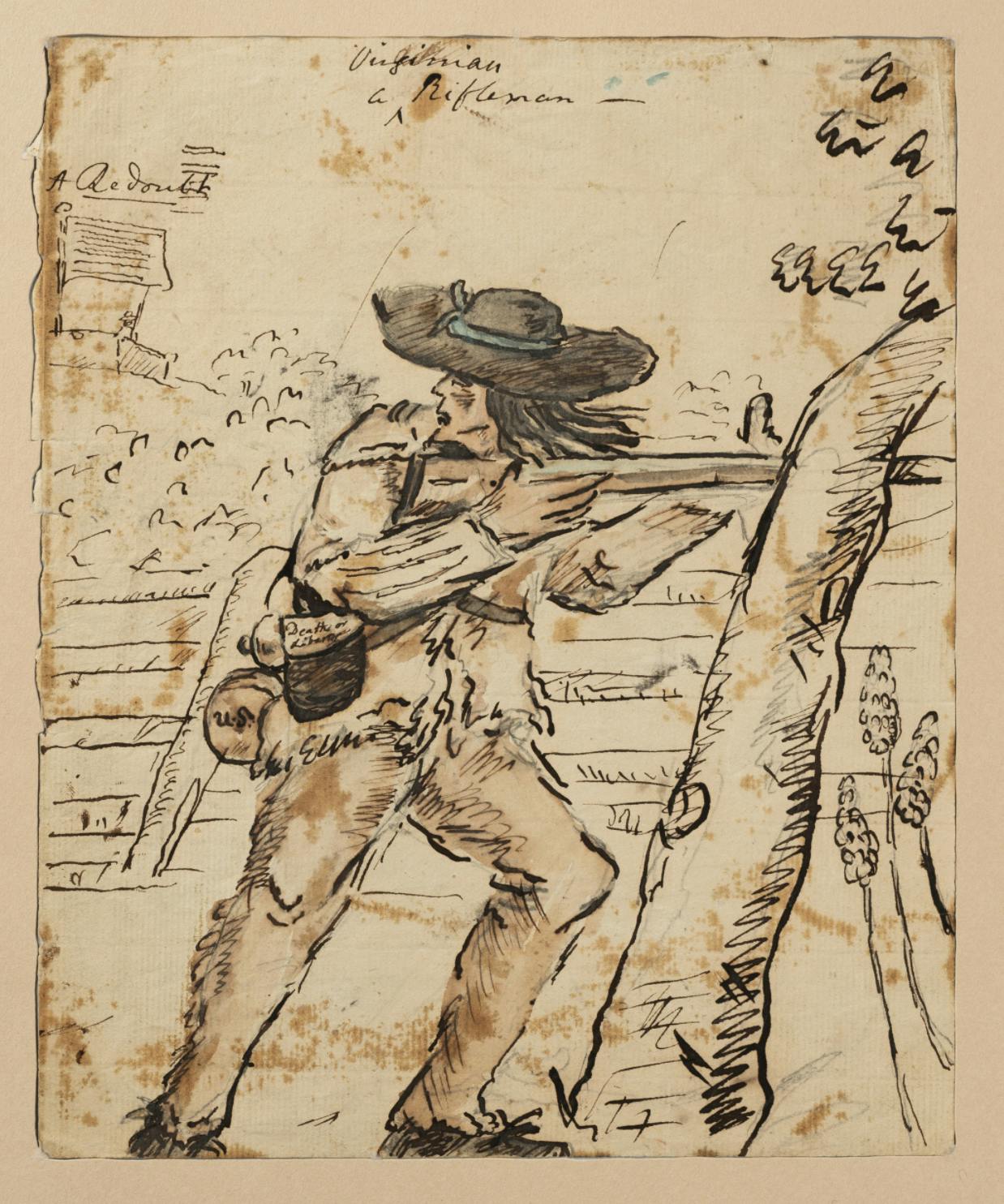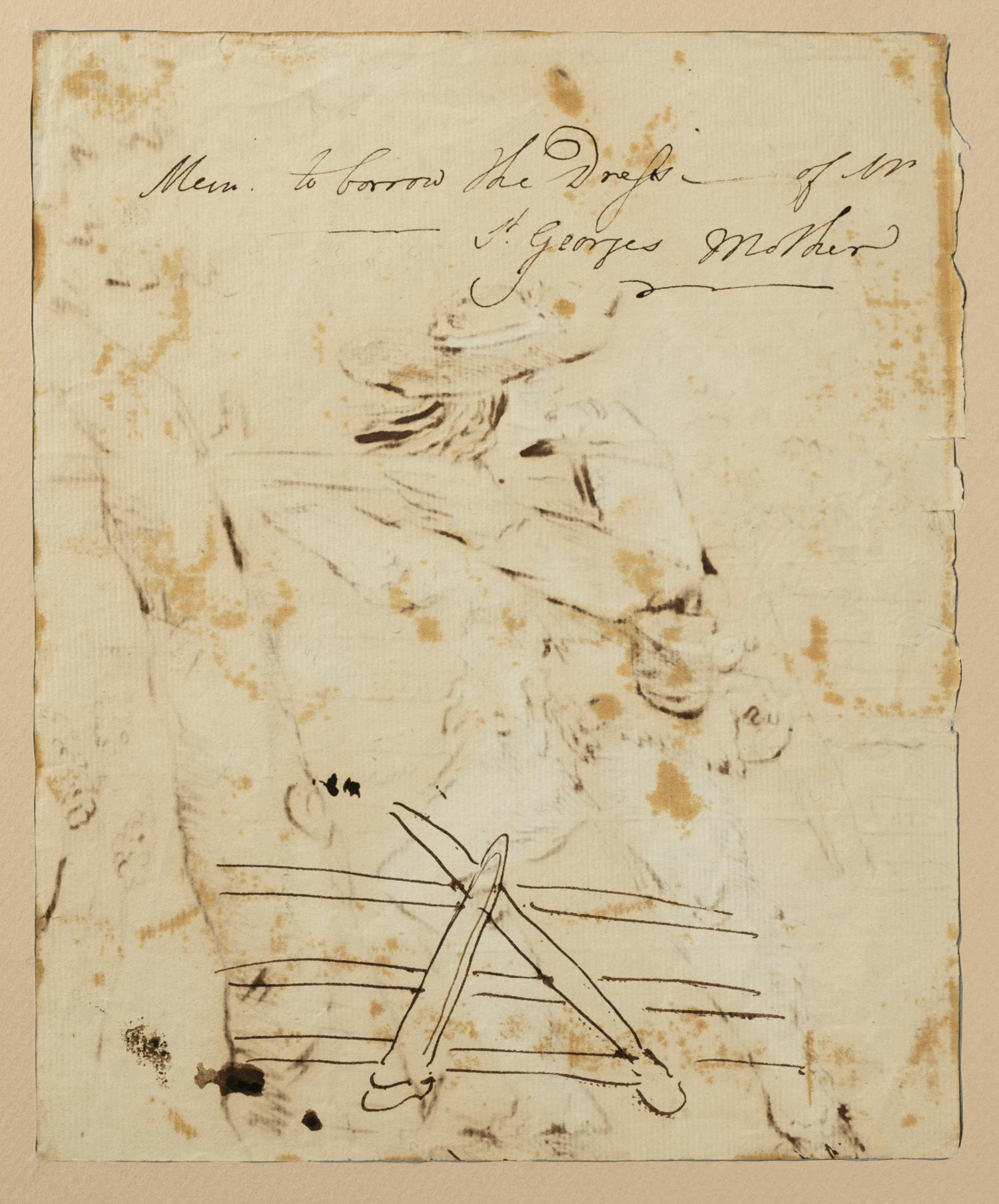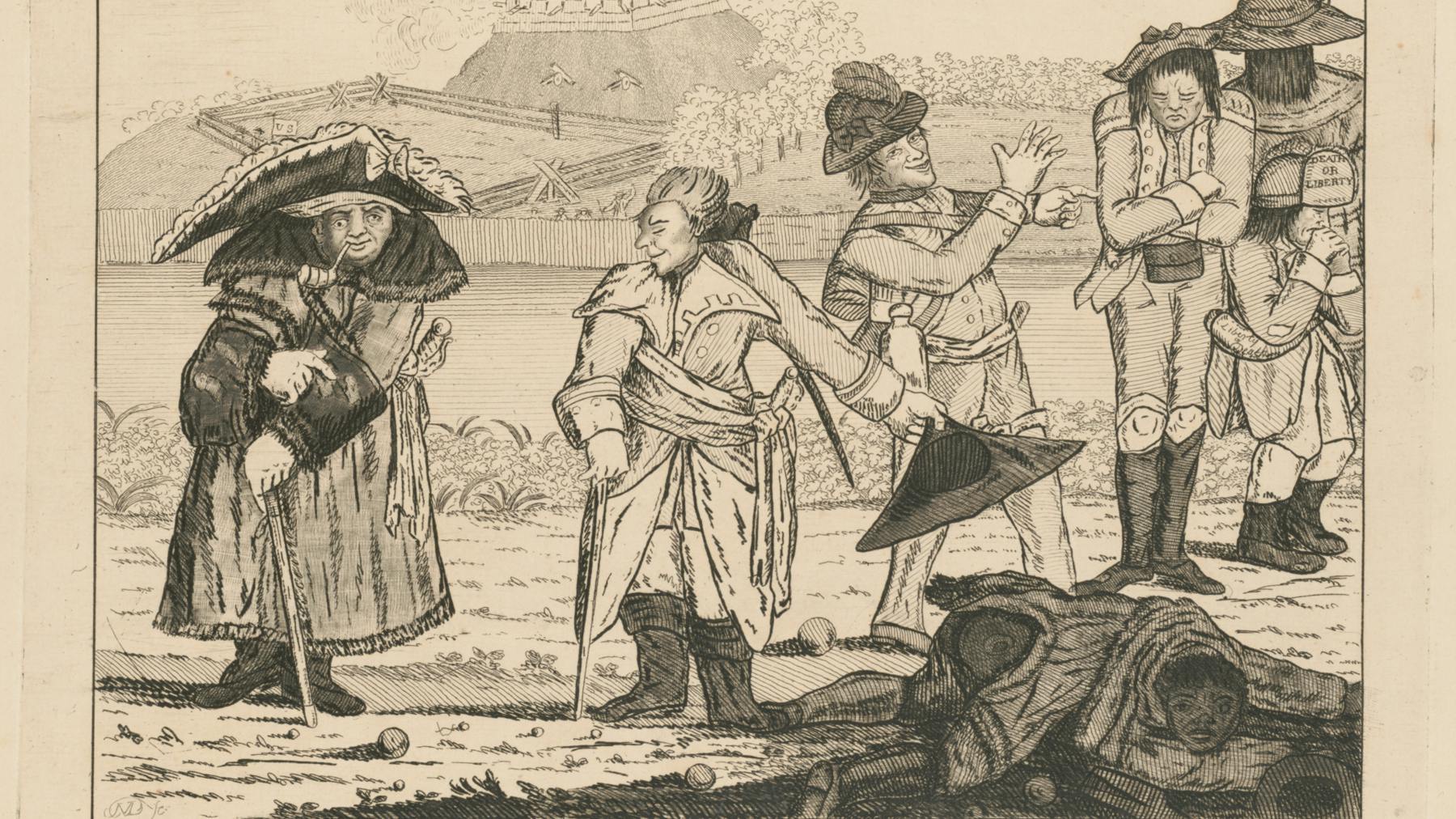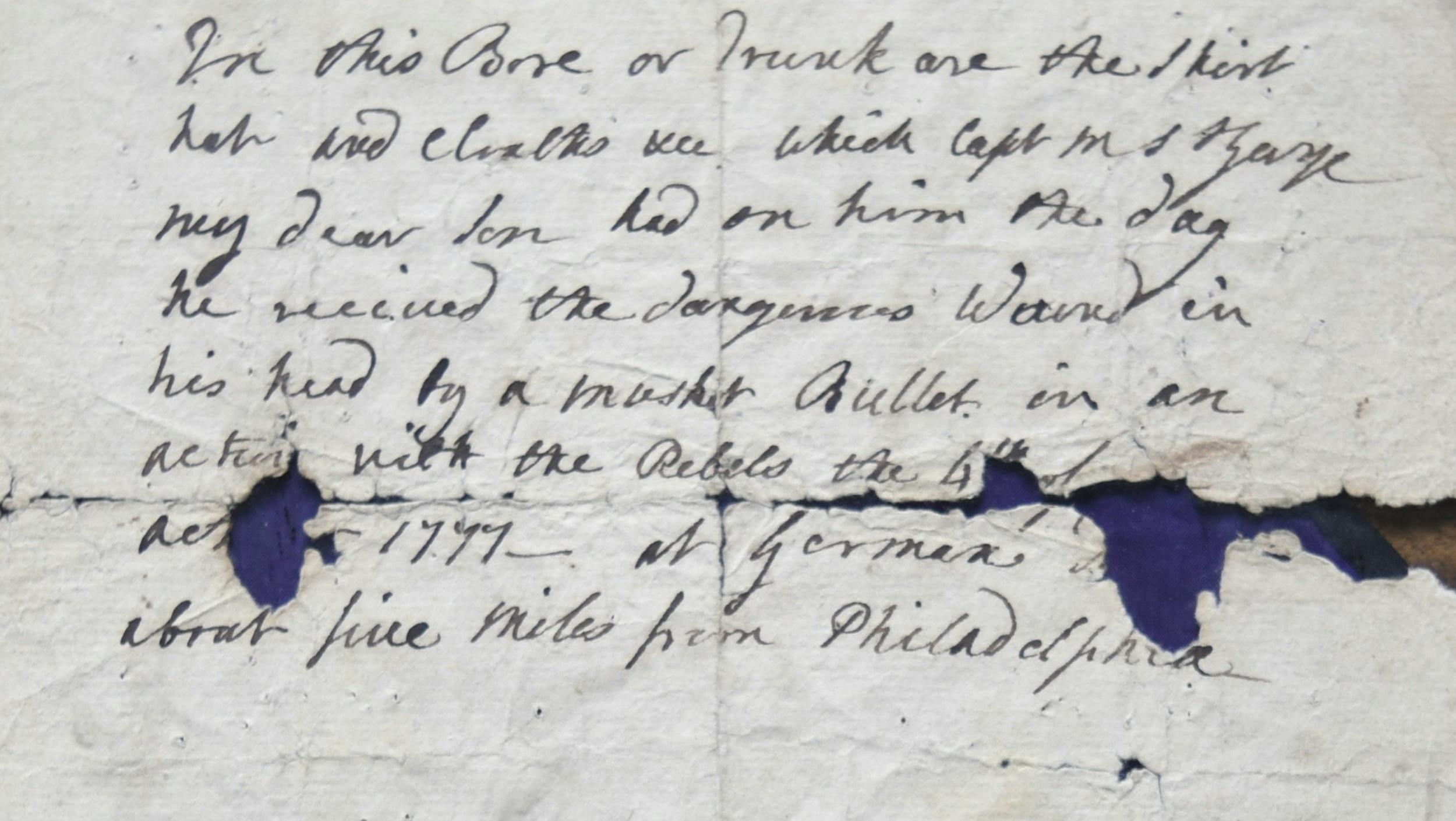American War

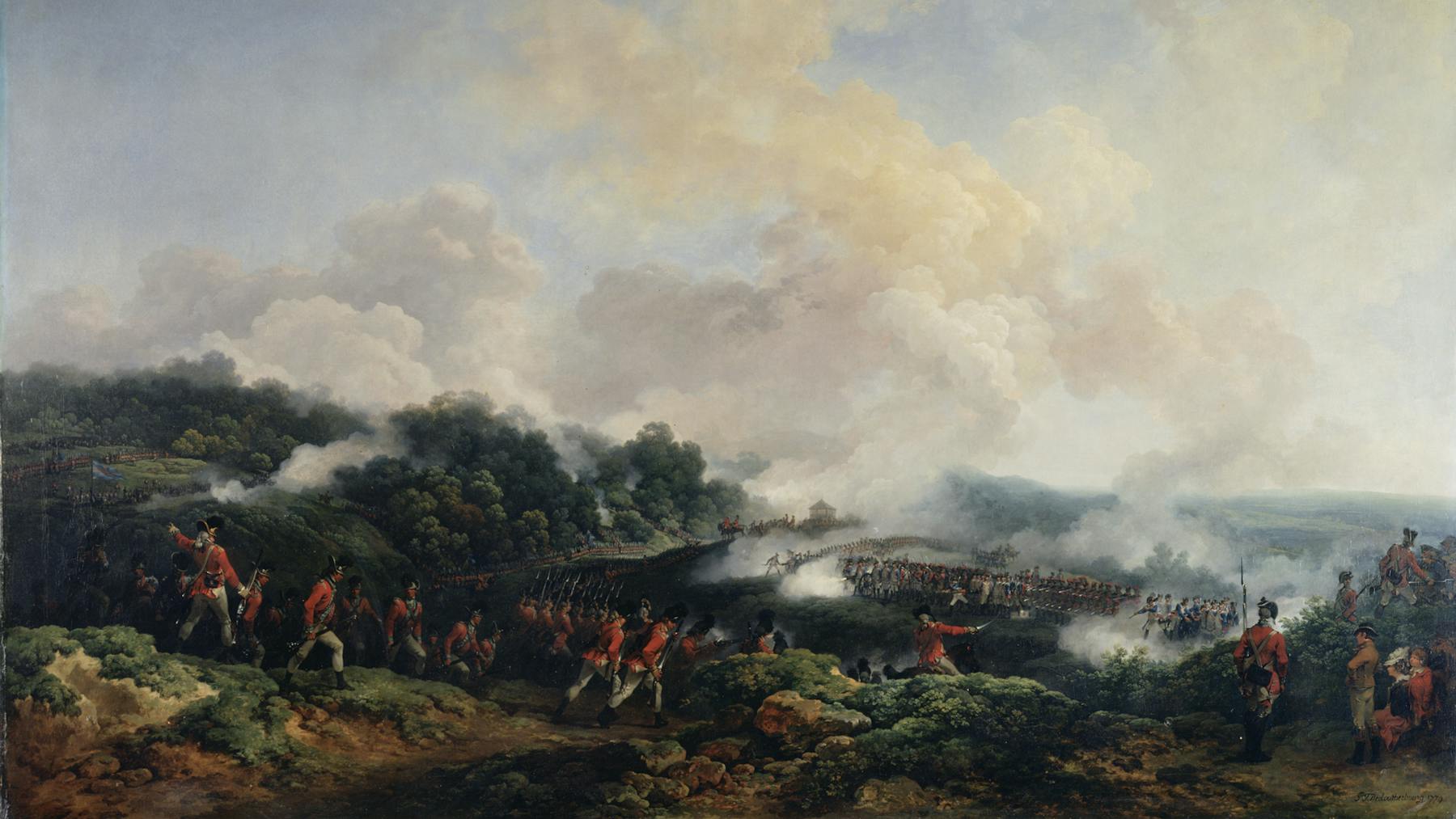
St. George in the Army
Richard Mansergh St. George developed an aggressive reputation while serving in the British Army. One fellow officer remembered that St. George liked to lead attacks and expose himself to enemy fire. A small armed entourage added to St. George's flair for the dramatic. He brought a servant with him from home named Bernard, nicknamed the “Irish Priest." St. George dressed Bernard in military clothing and armed him with captured American weapons. Bernard accompanied St. George into battle. Two men of African descent who had escaped from slavery in search of freedom with the British Army also followed St. George. He provided them with uniforms and weapons.
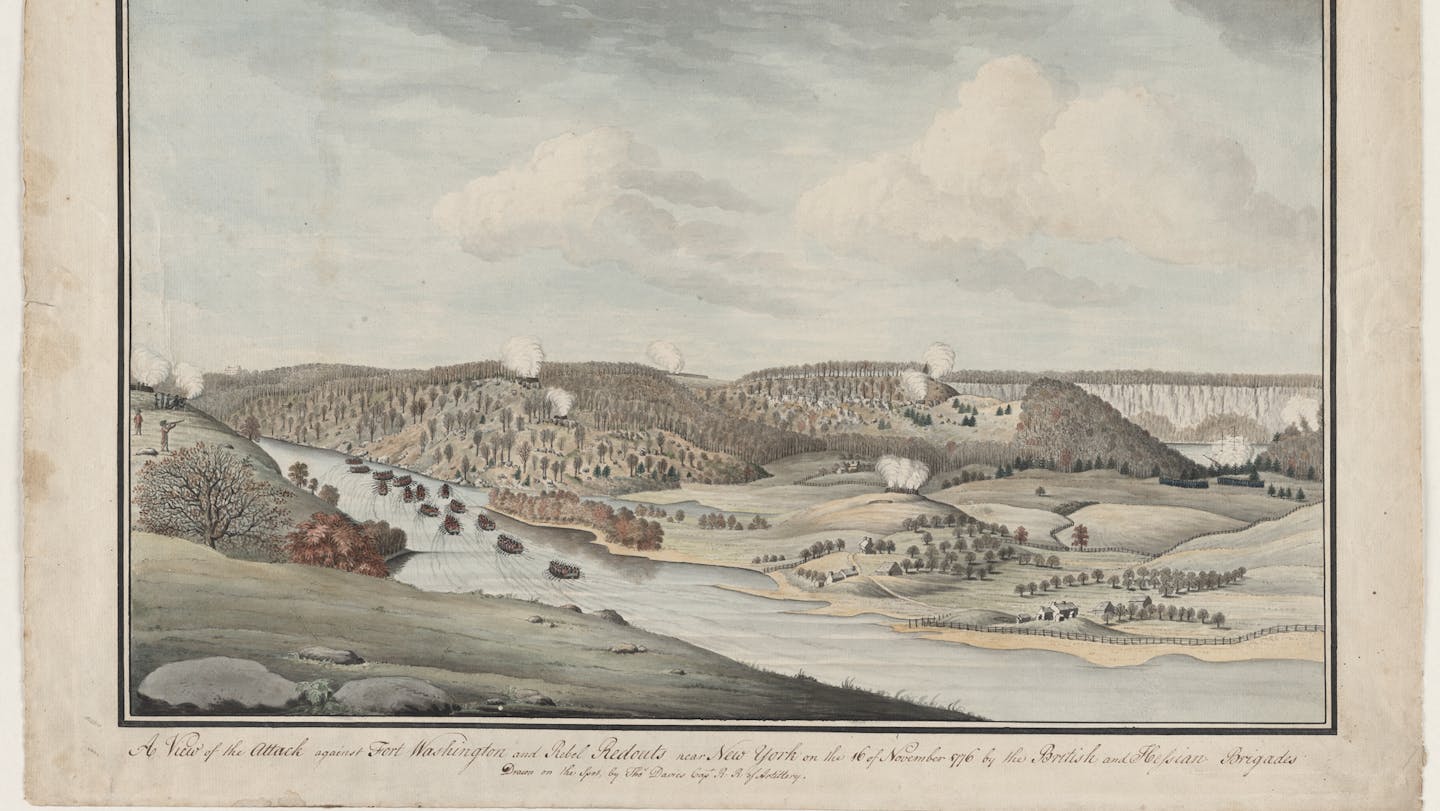
Fighting in America
Richard Mansergh St. George arrived in New York harbor in the summer of 1776 as the ink on the Declaration of Independence was barely dry. He was one of roughly 32,000 troops assembled in the harbor to stop the American Revolution in its tracks. St. George and his comrades quickly beat the American “rebels” out of the city. Later that year, he bought himself a promotion and became Lieutenant Richard Mansergh St. George of the 52nd Regiment’s light infantry company. The British light infantry used fast maneuvers, light-weight uniforms, and strict discipline to out-fight their adversaries again and again. Following a brief campaign in New Jersey in 1777, St. George and an 18,000-strong British Army sailed south aiming to capture Philadelphia, the capital of the American Revolution. St. George survived the fight for control of Philadelphia, but endured a traumatizing head wound.
Image Credit: New York Public Library
British Light Infantry
Some of the British Army’s most energetic officers commanded the light infantry. These troops were the army’s elite: covering its movements, leading its flanking maneuvers, and spearheading its quick strikes. Being a light infantry officer suited St. George’s dramatic character. Martin Hunter, a fellow 52nd Regiment lieutenant, remembered that St. George was “quite military mad” and “uncommonly passionate.” Hunter recalled that St. George wanted to lead any attack from the front and seemed to be unafraid of musket balls whizzing by his head. The 52nd Regiment’s light infantry formed part of the British Army’s 2nd Battalion of Light Infantry. General Sir William Howe, the commander in chief of British forces, created this unit of combined light companies from different regiments to overwhelm the inexperienced American Army. The light infantry proved to be extremely effective during the Philadelphia Campaign.
St. George and I were great friends. He was a fine, high-spirited, gentleman-like young man, but uncommonly passionate.”
Martin Hunter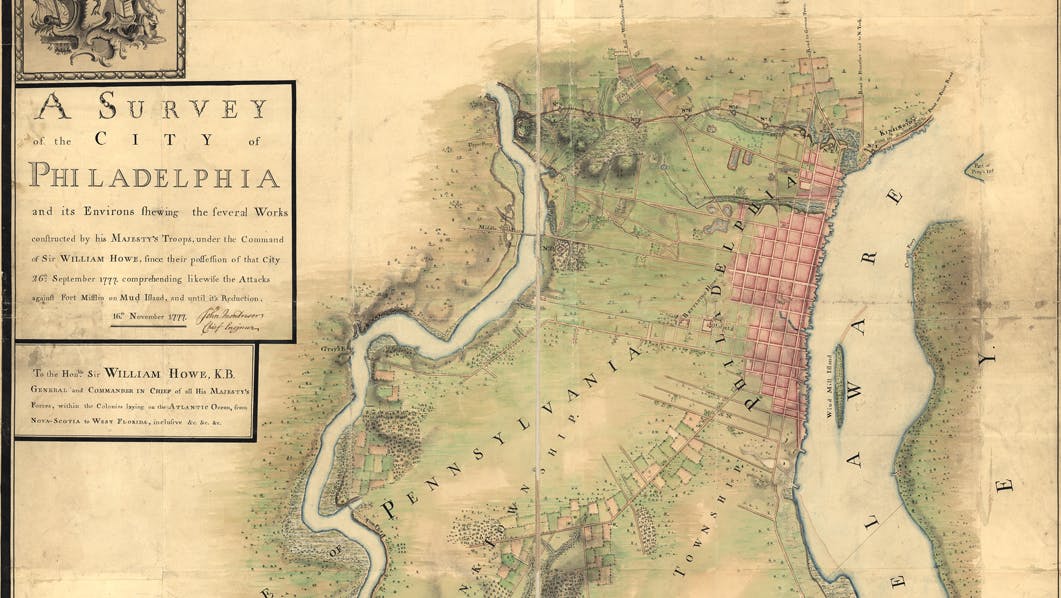
Philadelphia Campaign
In the summer of 1777, British General Sir William Howe planned to capture Philadelphia by sailing 18,000 troops from New York City. After a grueling month-long voyage down the East Coast and up the Chesapeake Bay, Howe’s troops disembarked and began an overland march from Maryland to Philadelphia. Washington’s army stood in their way. On September 3 in Delaware, the British light infantry defeated an attack from Washington’s troops at Cooch’s Bridge. Eight days later, the two armies met at the Battle of Brandywine (the largest single-day battle of the Revolutionary War) and the British won again. Washington’s army took another demoralizing hit from General Howe at the Battle of Paoli. On September 26, Howe’s army captured Philadelphia, but the fighting continued. The British occupied the city for nine months.
Image Credit: Library of Congress, Geography and Map Division, Washington, DC
Battle of Brandywine, September 11, 1777
The Battle of Brandywine was one of the largest battles of the Revolutionary War. Over 14,000 soldiers of George Washington’s army engaged with nearly 16,000 British and Hessian troops about 30 miles southwest of Philadelphia.
There was a most infernal Fire of Cannon & musketry—smoak—incessant shouting—incline to the right! incline to the Left!—halt!—charge!”
Richard Mansergh St. George describing the Battle of Brandywine“Line of Ireland”
Irish-born soldiers filled the ranks of the Pennsylvania regiments that Richard Mansergh St. George fought against around Philadelphia. Between 1760 and 1775, more than 46,000 immigrants from Ireland (mostly Scots-Irish Presbyterians from the north) settled in the 13 colonies. Over half of those immigrants arrived at Delaware River ports such as Philadelphia. When the Revolutionary War broke out, Irish immigrants enlisted in the American Army for different reasons. Some hoped to leave indentured servitude. Others joined to earn money. Many believed in the fight for American independence. After fighting alongside the large number of Irish soldiers in Pennsylvania’s regiments, Virginia officer Henry Lee called them the “Line of Ireland.” Richard Mansergh St. George and other Irish soldiers in the British Army came face-to-face with the “Line of Ireland” during the Philadelphia Campaign. At Brandywine alone, the British captured 134 Irish-born American soldiers. Later, at the Battle of Paoli, St. George and the light infantry surprised hundreds of Irish Pennsylvania troops in the middle of the night.
...awful was the scene,— to behold such a number of fellow-beings lying near each other, severely injured, and some of them mortally; a few dead, but a small proportion, considering the quantity of powder and balls that had been used.”
Joseph Towsend, Quaker man who witnessed the Battle of Brandywine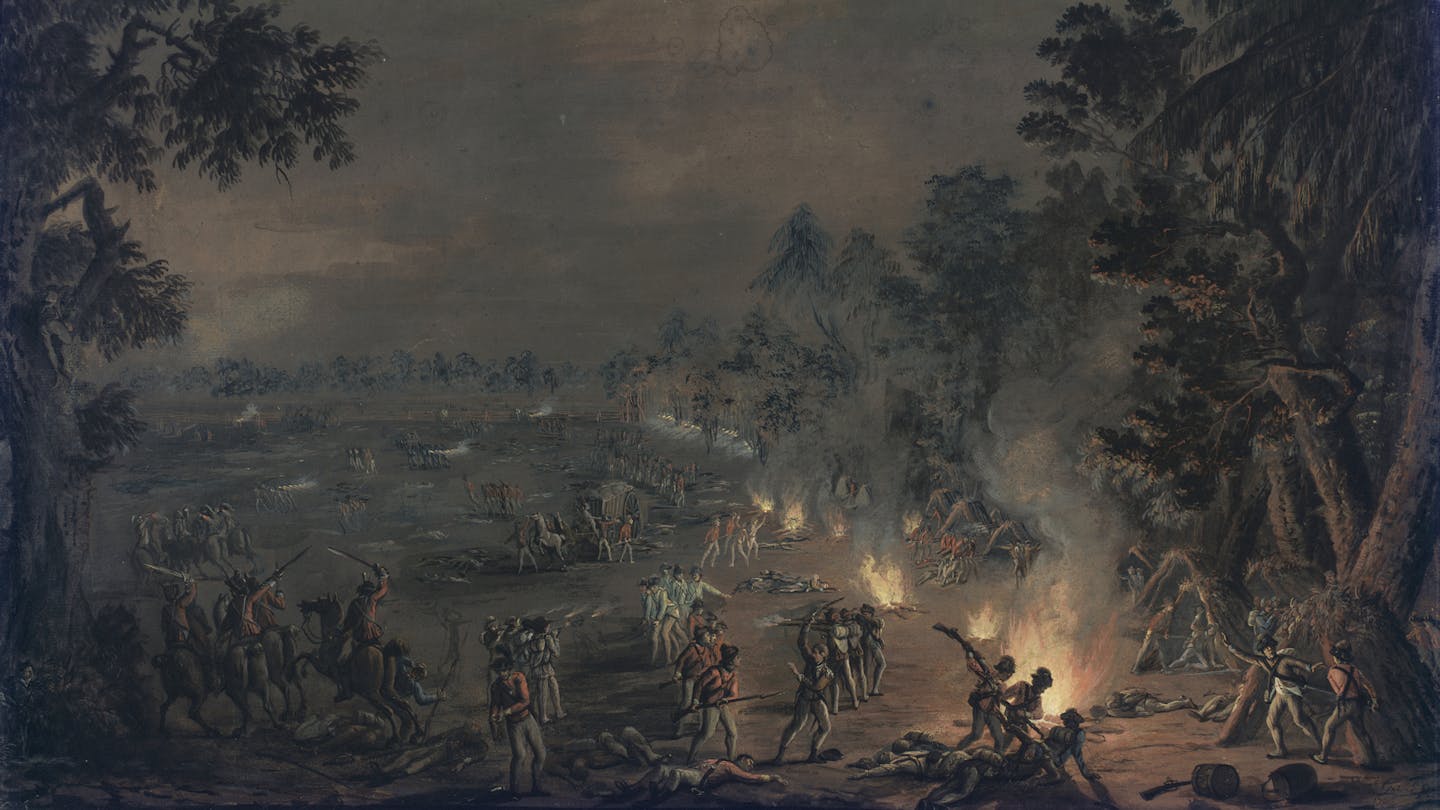
A Bloody Scene: Battle of Paoli
Shrieks and shouts pierced the night of September 20-21 in Chester County, Pennsylvania. At midnight, with their muskets unloaded and bayonets fixed, about 1,500 British troops led by Major General Charles Grey assaulted an encampment of 2,000 Pennsylvania soldiers near the Paoli Tavern. Grey’s troops descended on the Pennsylvanians, commanded by Brigadier General Anthony Wayne, and threw them into confusion and panic. Richard Mansergh St. George and his fellow light infantrymen engaged their enemy in bloody, hand-to-hand fighting that night. The British left 53 of Wayne’s soldiers dead and inflicted over 200 casualties, many by bayonets. The Battle of Paoli showed how menacing an opponent the British light infantry could be. Many Americans referred to the battle as the “Paoli Massacre.”
Image Credit: Museum of the American Revolution
Then followed a dreadful scene of Havock--The Light Dragoons came on sword in Hand. The Shrieks Groans Shouting, imprecations deprecations, The Clashing of Swords & Bayonets . . . was more expressive of horror than all the Thunder of the artillery.”
Richard Mansergh St. George describing the Battle of Paoli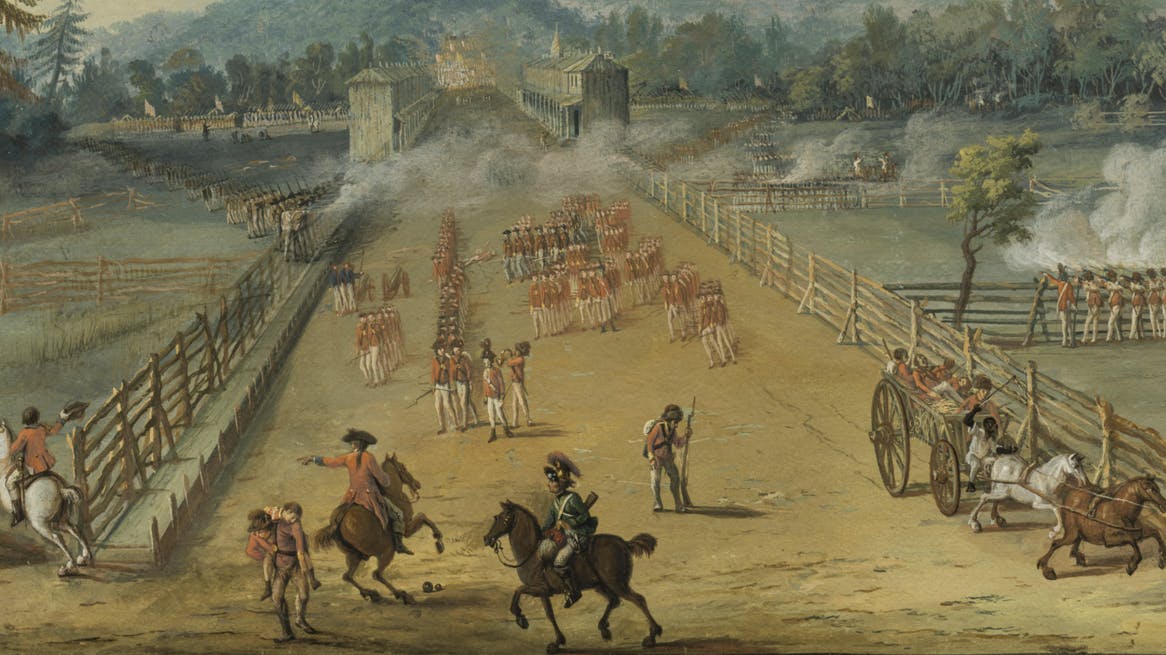
Wounded at Germantown
On the foggy morning of October 4, 1777, in Germantown, near Philadelphia, American musket fire wounded Richard Mansergh St. George in the head. The British light infantry bore the brunt of a surprise assault by General Washington’s army. The American troops attacked the British in search of revenge for Paoli and shouted “Have at the Bloodhounds! Revenge Wayne’s affair!” The light infantrymen retreated from their camp to regroup after being overwhelmed. By the end of the day, Howe’s army forced Washington to retreat but the British paid for their victory with many soldiers killed, wounded, or captured. One of the first musket volleys fired by Washington’s troops that day hit Richard Mansergh St. George. A soldier under his command, Corporal George Peacock, dragged St. George from the battlefield and saved him from being captured or bleeding to death. St. George miraculously survived his wounding but would suffer chronic pain for the rest of his life. Germantown was the last time he served in battle. Shortly after, Richard Mansergh St. George went home a casualty of war.
Image Credit: Museum of the American Revolution
Washington’s Revenge
Although Washington’s soldiers retreated at Germantown, they rattled their enemy. General Washington’s attack on the foggy morning of October 4 surprised the British. Having experienced defeat after defeat in September 1777, the assault at Germantown provided a morale boost for the American Army. The troops who had survived the “Paoli Massacre” saw Germantown as their revenge against General Howe’s army. The Continental Army reported over 1,000 casualties (killed, wounded, or captured), but it also made the British Army pay dearly for its victory. Brigadier General Wayne thought the Battle of Germantown “was a Glorious day.”
Have at the Bloodhounds! Revenge Wayne’s affair!”
Pennsylvania Troops at the Battle of Germantown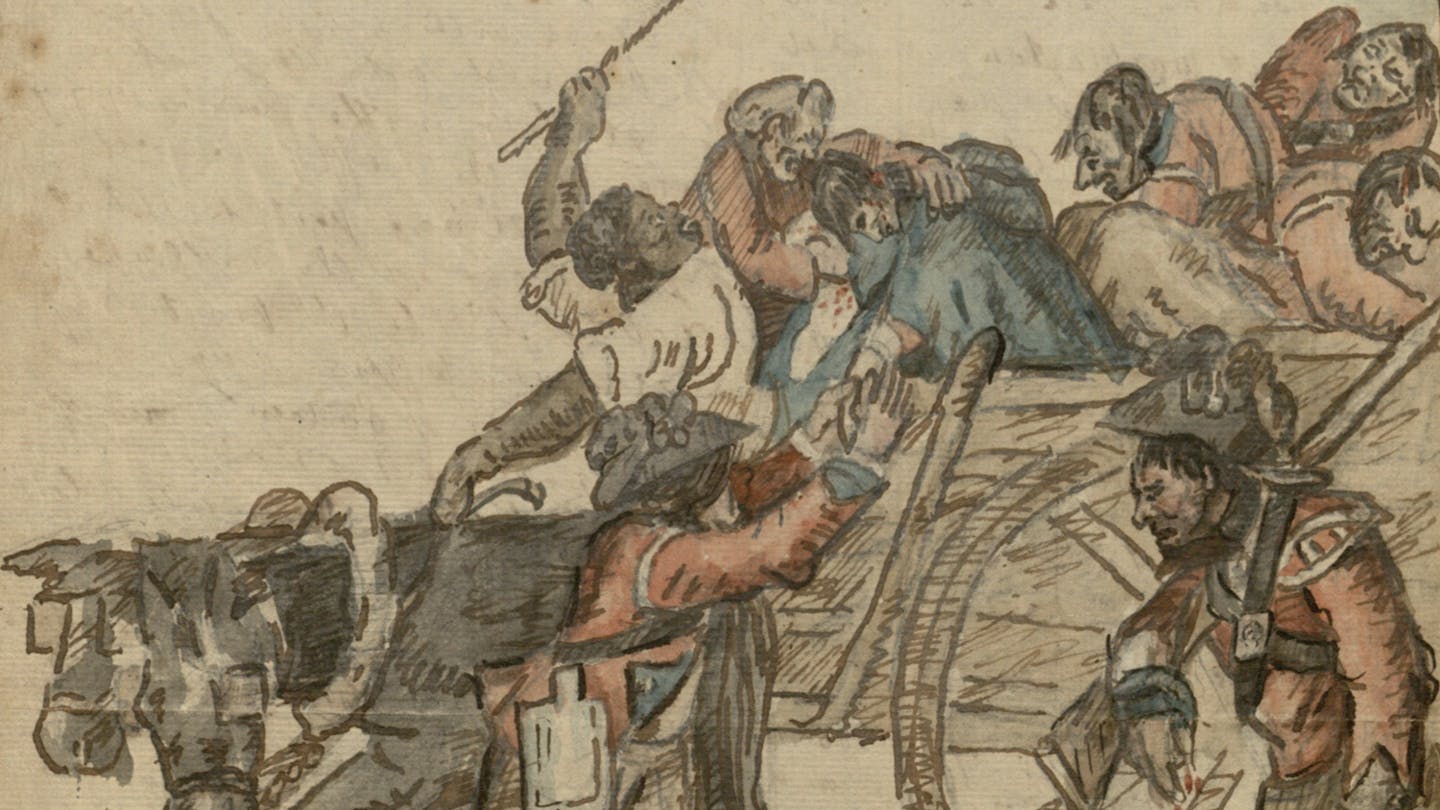
A Detective Story
Historians and curators are detectives. They use their training to gather evidence, make connections, and tell stories. It took over 60 years of detective work by numerous researchers to establish Richard Mansergh St. George’s connections to the paintings of Paoli and Germantown by Xavier della Gatta. The case began in 1957 when the Valley Forge Historical Society (the Museum of the American Revolution’s predecessor organization) acquired the two paintings as donations after they were purchased from an auction in England. At the time, these rare, detailed battle scenes were valuable additions to the study of the American Revolution. However, they left historians with a mystery. Why did Xavier della Gatta, an Italian artist who never set foot in America, choose to paint these battles and how was he able to depict them so accurately?
Image Credit: Harlan Crow Library, Dallas, Texas
Gathering the Evidence
In the 1980s, a history teacher from Wisconsin named Stephen Gilbert began a detailed study of the two paintings as part of his master’s degree. He identified the people depicted in the scenes and hypothesized that an eyewitness, probably a British officer from the 2nd Battalion of Light Infantry, helped create the paintings. Richard Mansergh St. George was Gilbert’s prime suspect because he fought in both battles, sketched while on campaign, and is depicted in the Germantown painting. Gilbert’s theory remained unproven, until now.
A Break in the Case
In 2007, new evidence surfaced. Four sketches from the Revolutionary War appeared at auction in New York City. They depicted vignettes from the perspective of a British light infantry officer, including one showing the officer with a head wound being transported to Philadelphia. Historians of the Revolutionary War quickly attributed the sketches to Richard Mansergh St. George who created “caricatures” during the war and was wounded in the head at the Battle of Germantown. Those historians also compared the sketches to Xavier della Gatta‘s paintings and an unattributed British cartoon from 1778 that depicts a light infantryman. They immediately saw similarities.
St. George drew caricatures uncommonly well . . . ”
Martin HunterMore Discoveries
Since 2007, the Museum of the American Revolution’s curators have confirmed Richard Mansergh St. George’s connections to Xavier della Gatta’s paintings based on new discoveries. They have uncovered documentation for St. George’s travels to Italy following his service in America, established a firmer understanding of St. George’s life story, and dug deeper into St. George’s personal relationship with art. Xavier della Gatta’s paintings can now be considered two of 22 pieces of art (all included in this exhibition) that either depict or were created by Richard Mansergh St. George. Together, they provide an incredible and personal visual record of one soldier’s journey through the Revolutionary era in America and Ireland.
